





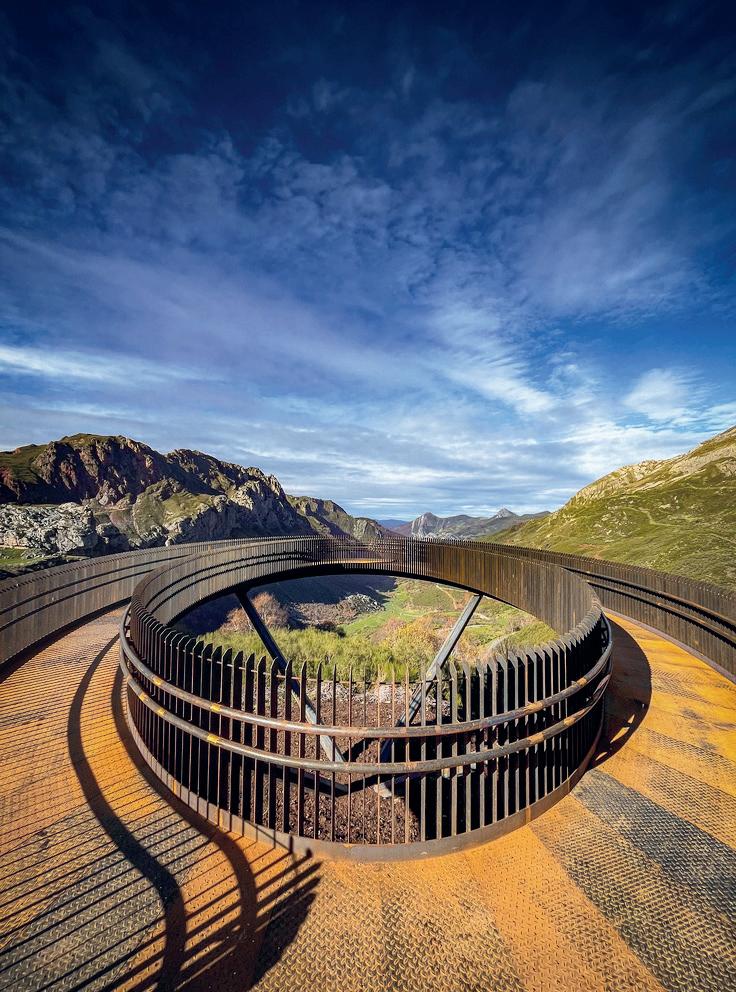



SPAIN has broken its all-time June heat record, with temperatures hitting a blistering 46°C in El Granado, Huelva, near the Portuguese border.
The milestone, recorded on June 28, is still awaiting official confirmation from national weather agency AEMET.
It comes as a fierce heatwave grips southern Europe, placing Portugal on red alert and pushing France and Italy into the low 40s.
Portugal’s meteorological institute urged locals and tourists – including thousands of Brits on the Algarve – to stay indoors as the mercury rises. Lisbon hit 42°C, while Badajoz, just over the border in Spain, reached 44°C.
The Valencia region also baked, with inland areas seeing the most extreme spikes. The town of Xativa recorded a scorching 42.6°C, while nearby Sumacarcer and Moixent hit 42.5°C and 42°C respectively. At Valencia airport, the mercury climbed to 39.3°C – the highest June reading there since records began in 1966. In Alicante province, coastal areas fared slightly better, with the city of Alicante reaching 32.4°C on June 15. However, the inland town of Pedreguer saw highs of 39.6°C, while Orihuela reached 39.3°C.




The style that took Baroque to the extreme and then on to the Americas in our Property Magazine inside


A BRITISH tourist has described the terrifying moment a bar exploded around her while she was ‘buying a shirt from a market stall.’
Debbie Scholefield, 48, a former paramedic, was visiting her mother in the Mar Menor region when she was caught up in the tragedy on June 19 that claimed two lives and injured around 20 others.
“I was standing at the stall right next to where it went off,” the Huddersfield resident told the Olive Press Bomb
“I thought someone had set off a bomb – glass and debris went whooshing past my head, then it hit me. I was thrown forwards, blasted clean off my feet.”
The blast occurred in the Lo Pagan area while a weekly street market took place on Avenida Salvillo, with the two market stalls where Debbie was standing hit hardest.



























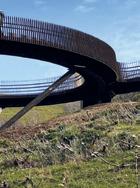

























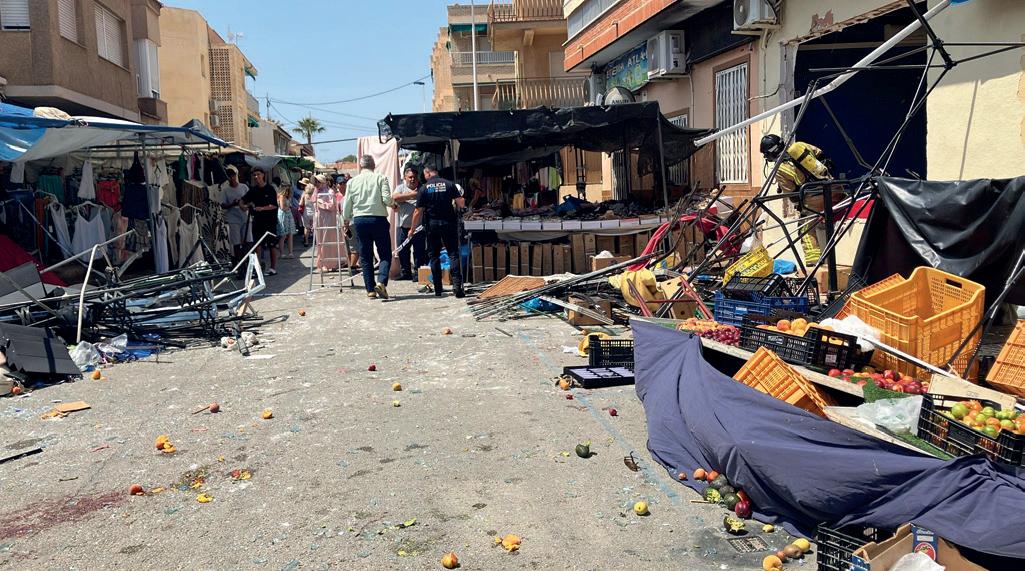
Debbie described how she got to her feet in a daze, the back of her legs lacerated, as two women stared at her before hurrying to sit her down. After checking that her mother was unscathed, Debbie told the Olive Press she set about trying to help the walking wounded with her paramedic training.
“There were a lot of head wounds, people shouting and screaming hysterically, but most people were standing,” she said.
Two women were seriously injured in the blast – a 56-year-old Spanish woman and the owner of the bar
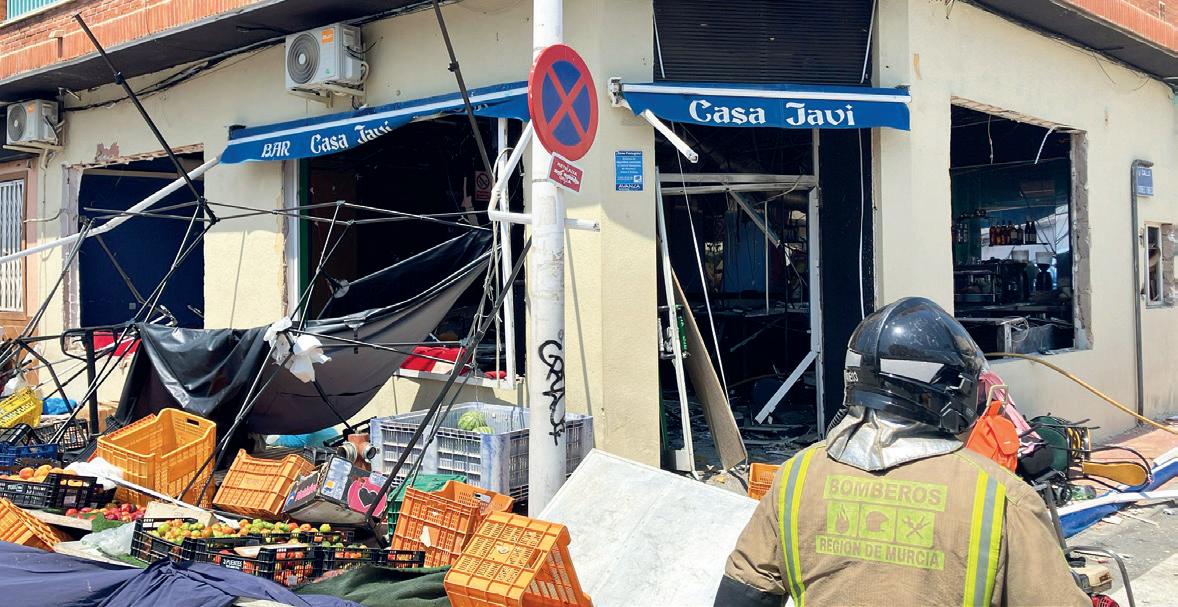
where the explosion originated, a 38-yearold woman from Morocco.
“I saw her there with severe burns, walking in circles, so I went over to help her,” Debbie continued.
“But when I got there, I was shocked.
I knew immediately that she wasn’t going to make it. I knelt down, trying to reassure her, dressing her in loose clothes to protect her burns from the sun.”
Both women died in hospital a week later.
Lisa, 51, was in her kitchen in San Pedro del Pinatar (Murcia) when an explosion at a bar went off.
“It sounded like a terror attack, like
a bomb had gone off,” the real estate worker told the Olive Press.
“It was a sound that was really, really scary. We all jumped out of our skins, absolutely not having a clue what had just happened.”
Lisa, who lives on the same street as the bar, rushed outside to witness scenes of devastation.
“Then all of a sudden, chaos – just pure chaos,” she said. “People were screaming and shouting, and it felt to me like we were under attack.”
The British resident described seeing ‘blood, blood, blood and people covered in glass shards’ as emergency services rushed to the scene.
“There were splintered vegetables everywhere, metal – it looked like a bomb had gone off. Literally.”

The tragedy took a sinister turn when the Guardia Civil’s investigation concluded the blast was deliberate, with experts finding a cut to the rubber casing on a gas butane cylinder inside the bar.
“It wouldn’t surprise me,” said Lisa, adding that the bar had a notorious local reputation.
“It was very well known for its dealings with drugs, prostitution, that kind of thing,’ she explained. ‘It wasn’t particularly a good place. It was not a nice place to frequent.”
Lisa’s suspicions were immediate following the explosion.
“My first thought was that they were cooking up some drugs in the back, and it’s all gone
CARTAGENA and San Javier councils have increased bus services in the La Manga area during the tourist season through to September 7.
It’s Xmas!
TEULADA-Moraira
council has advertised a four-year contract to provide two drone light shows for Christmas flying over Moraira Castle and the football field in Teulada.
JAVEA is charging a fixed fee of €9 for cars to enter and park on roads leading to Calas Granadella and Barraca to reduce overcrowding during the summer.
LA LIGA club Valencia has finally secured funding to build its long-delayed €322m Nou Mestalla stadium which will open in 2027 with a 70,000seat capacity.
THE family of a British father who mysteriously plunged to his death from a cliff in Benidorm has joined forces with another grieving UK family – as both fight to uncover the truth about their sons’ suspicious deaths in Spain. The Osman family, from Pontypridd, have been helping Sandra and Rob Adams navigate the same harrowing battle for justice after their son Brett Dryden, 35, was found dead in his Mojacar apartment in July 2024.
Body
Nathan Osman, 30, died just two months later after being separated from friends on the first night of a lads’ holiday.
By Walter Finch
His body was discovered at the foot of a 200-metre cliff –but Spanish police dismissed it as an accident or suicide and closed the case within days.
Refusing to accept this, Nathan’s siblings spent months conducting their own investigation – knocking on doors, gathering CCTV, and building a dossier that proved Nathan was a devoted father of four, not just another ‘drunk Brit abroad’. Their efforts finally forced a court to reopen the case this March. Since then, they’ve been offering support, contacts and advice to the Adams family –who faced a strikingly similar

FAMILY MAN: Nathan Osman was found dead at the foot of a cliff


British families join forces to fight suspected Spanish ‘cover-ups’ after tragic deaths of loved ones

reached the funeral home, she noticed Brett’s significant injuries – and rushed to court to halt the cremation. An autopsy later revealed he had been severely beaten, with a gaping head wound.
battle. Brett was also written off by Spanish police just 48 hours after being found dead. Authorities claimed he’d died of a blood clot –but a sobbing detective secretly warned Sandra to look at the body herself before cremation. When Sandra
Blood was splattered throughout the flat and many of Bretts’s belongings, including an iPhone 5, were missing.
The two families have been supporting one another with advice on dealing with the Spanish police and finding reliable lawyers, among other
hurdles.


wrong and blown up. That’s the kind of place it was.” She said the bar, Casa Javi, had suffered a serious fire about a year ago, also affecting a home above.












The Olive Press is aware of a wider support network of more families of Brits killed in Spain who have asked to remain anonymous for this article.
“But there’s a real strong pat-



tern here of the police just ignoring – just not doing their job – when it comes to crimes involving British people,” Sandra concluded.
Opinion Page 6
Police were regularly called to deal with fights, and residents claimed the bar had been a ‘clandestine’ brothel under previous management. Officers had hoped to interview the bar owner about the explosion, but she never regained consciousness before passing away.
It means the exact details behind the explosion may never be known.
The night before the blast, San Pedro Policia Local officers found the bar owner walking strangely on a beach, possibly under the influence. While no crime was committed, she was ‘known’ to police.
The tragedy has deeply affected the local community. “I think a lot of the community felt really terrible for the three people seriously injured,” said Lisa. “The worst thing was people were going out to do their vegetable shopping, browsing around the market, only for it to become the last day of their life. That’s pretty freaking awful.”
















AS the record-breaking heatwave took hold spreading its tendrils from the Sahara into Europe, the Olive Press went heat chasing.
Just as storm-chasers like to get up close and personal with tornadoes and hurricanes, we go to death-defying meteorological phenomena, and we have come up with a new one: the heat chaser.
Weather forecasters had already bandied about the possi-
The Olive Press takes a journey from the fire of the costas into the dark boiling interior of Sevilla province
bility of Spain seeing 46C while still in the month of June, and we wanted to be there to feel it hit us in the face.
So we set out for Ecija, a charming Sevillian town of baroque spires affectionately known as the frying pan of Spain.
Located in the Guadalquivir
By Walter Finch
heat that we have to endure here, but we manage,” Marga, Ecija resident born-and-bred, told the Olive Press.
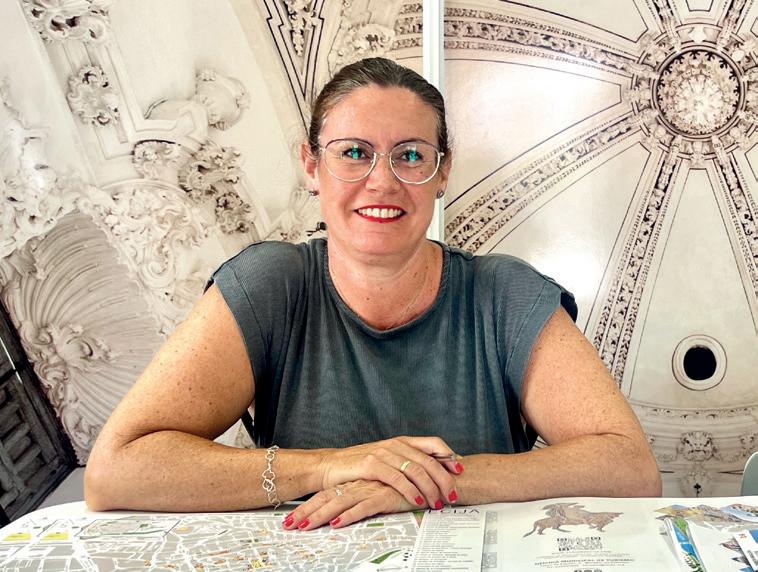

Valley in a geographical depression that traps the oppressive inland heat, Ecija has registered temperatures of over 46C in the peak summer months before (ie. not June).
In fact, it is just down the road from where Spain’s alltime record heat of 47.6C was recorded in Cordoba in August 2021. “It’s criminal the
During the peak summer months, as the sun inches its way higher into the sky, the Ecija residents scurry to the shadows.
The day starts full of life and activity. Tables and chairs go out on the broad central square, Plaza España, around 8am –when the temperature is only 30C.
Despite its stunning Moorish remains, baroque towers, palaces, and Roman mosaics, Ecija was all but deserted by 10.30am as the mercury hit 36C.
By midday, the town was a ghost town — like a western scene before a showdown.
But not the Olive Press, in







search of understanding how to handle extreme heat in a Spanish summer.
At 2pm, the heat hit 40C — lunch time in Spain, when squares normally buzz with cold drinks and tapas. The chairs remained empty. Most sought refuge in air-conditioned restaurants.
“I grew up in this but I still suffer,” said Tamara, 24, a waitress.
Is this heatwave anything new?
Locals say no - “It’s the same heat as always,” but “it’s coming earlier now.”
And lo and behold, as I sit nursing an ice cold Verdejo following a splendid lunch at Bar Chico, the news comes through that Spain has broken its heat


record for June – 200km to the west.
It’s recorded in Huelva province in a town called El Granado… and the mercury nudged 46C.
Over in the frying pan of Spain it’s a mere 43C, and time to try the egg test.
The Olive Press did it before with some success in July five years ago when we fried an egg on the pavement.
But can we do it at 4pm on a hot June day on a bench that is definitely too hot to sit on?

THE DIFFERENCE BETWEEN LIFE IN THE UK AND LIFE IN SPAIN, WRITES CHARLIE MULLINS
UK, Spain, and even Gibraltar natives left scratching their heads – but the monkeys couldn’t care less
READING the headline in the Olive Press - Surrender or Triumph I can’t help but come to the conclusion that like all the rest of Brexit the Gibraltar settlement is a calamitous deal that makes everyone a loser.
But also like Brexit there is a big loser, that would be the UK with a bronze medal, and Spain winning silver, which was more than had been hoped for, especially considering the true inhabitants of ‘Gib’ who in the 2016 EU referendum voted 94.9% in favour of remaining part of the UK.
Everyone with skin in the game here has come up short. Spain wanted the rock back but has had to settle for being allowed to put a customs shack on the border to stamp British passports in and out of the territory. A sort of face-saving deal that means Gibraltar stays British, but at a cost to the Spanish taxpayer.
On the other side of the fence is the UK and the 35,000 Gibraltar natives - out of a total of 38,000 - who voted to stay part of the UK. No longer can Brits who are resident in the UK drop into the rock nation for a steep climb and an



bench.
Ecija doesn’t start to come back to life till after 9pm.



Cracking it onto the burning surface I expect it to sizzle but it doesn’t whiten at the edges or harden its yolk in the centre.
“Here, we live by night,” explains Romanian Mihail, gearing up for evening.
“Yes, it was hard to get used to at first, but it’s only two months a year.”

All that’s left is a raw eggy mess on a



WORTH A CHEER: At least if you are one of Gib’s Barbary Macaques, but not so much if you are British or Spanish
encounter with some resident apes (actually Barbary macaques) that have been citizens for longer than anyone, after being introduced by the Moors as long ago as the 8th century.
More generally, this outcome is completely bonkers!
Did I say everyone’s a loser? I guess that’s not 100% correct; the 300 monkeys probably don’t give a ‘flying macaques pooh’ who’s in charge of policing the border, and Gibraltar’s Business minister, Nigel Feetham is probably a winner too.
And why is young Nigel so keen on the deal? I reckon that might be something about the devil being in the detail. All card-carrying residents of Gibraltar will not only be able to travel passport check free between their homes and the
UK, but they also get a free pass into the Schengen zone (most of the rest of Europe). You have to wonder what price Nigel will soon be putting on a Gibraltar ID card?
I think the Maltese might be getting a bit worried about their lucrative passport side-hustle, which means the island nation’s passports currently go for €690k for one, or €840k for an entire family! More generally this outcome is completely bonkers. The UK has held sovereignty over the rock since the Treaty of Utrecht 1713 and its people want it to stay that way. I get that Spain feels the rock should be Spanish, but now all it has is the cost of looking after the border, but they still can’t fl y the Rojigualda fl ag over the rock’s 38,000 souls and 300 ape immigrants.
Just another example of why Brexit is a complete basket case of an idea!

SUFFER: She may be used to it but Tamara still swelters

Perhaps not. Given the premature nature of this heatwave and the record-breaking June, they might have to extend their endurance in the coming years.
Retired tennis legend Rafa Nadal has been made a marquis by King Felipe in recognition of his huge contribution to Spain.
Nadal, 39, who won 22 Grand Slams, will become Marquis of Llevant de Mallorca. He was among six people honoured to mark the King’s 10th anniversary on the throne. Others given titles - which ranks above an earl but below a duke - included pop-rock singer Luz Casal and Paralympic swimmer Teresa Perales.



The title, which can be inherited, is a symbol of gratitude for his role in promoting Spanish values of respect, excellence and self-improvement.






A DEVELOPER wants to build a campsite covering 336,000m² within the Sierra Escalona protected natural area in southern Alicante.
The site, near the CV-951 road and two kilometres from Torremendo in Orihuela, has sparked opposition from ecologist groups like Friends of Sierra Escalona.
They warn it would harm protected zones, including a bird sanctuary, and impact wetlands at the nearby Pedrera reservoir.
Orishas Trust SLU has applied for a declaration of community interest, seeking permission to develop ‘non-developable’ land.
Plans include 86 cabins, over 260 pitches for tents and caravans, plus a restaurant, supermarket, pool and tennis courts.
The €8.1 million project is pitched as compatible with the rural environment.



TINY turtles smuggled in from China were found hidden inside a container by the Guardia Civil at a Gandia checkpoint.
Twenty black-bellied leaf turtles were discovered concealed among stuffed toys and socks. Some of them had died from stress, improper handling, and the sheer length of the journey
from Asia.
The survivors were taken to Benidorm’s Terra Natura park, which has extensive experience in looking after exotic animals. Staff went into overdrive to provide critical care and rehydration for the turtles, which in adulthood reach just 15 centimetres in length.
VALENCIAN president Carlos Mazon has launched a hard-hitting crackdown on the region’s growing squatter crisis.
He unveiled a raft of new measures this week to ‘prevent, combat and curtail the activities of squatters’ as illegal occupation complaints hit 1,800 last year – a huge jump from just 277 in 2010. A new ‘care centre’ will be set
By Alex Trelinski
up for victims, offering legal and psychological support. Help will come via 37 crime victim offices and 66 Justiprop centres, with lawyers, psychologists and social workers on hand.
A dedicated 012 helpline will allow homeowners to report
cases and get fast assistance.
Mazon warned that the issue affects many elderly people, including some renting out homes to pay for care.
A BRITISH hiker spent the night lost on Calpe’s Peñon de Ifach trail before being rescued the following day.
The 48-year-old man lost his bearings halfway along the route and, as night fell, stayed put until morning. When daylight arrived, he was still unable to find his way back and called emergency services shortly before 1pm.
Due to the steep slope, a rescue team from the Alicante provincial fire service dispatched its Alfa helicopter. He was hoisted to safety and flown to Calpe’s helipad in good health.


A LUXURY yacht was burnt to a crisp at Denia’s port.
Eleven fire crews from Benidorm, Benissa and Denia rushed to the Moll de la Ponsa dry dock. The 21-metre Polish-flagged catamaran was already engulfed in flames when crews arrived.
People on nearby boats were evacuated as a precaution in case the fire spread.
The yacht’s skipper confirmed nobody was on board at the time. The vessel had been brought onto dry land the previous day. Fortunately, nobody was injured and the fire was contained to the single catamaran.
“Most of the problems involve people who have a second
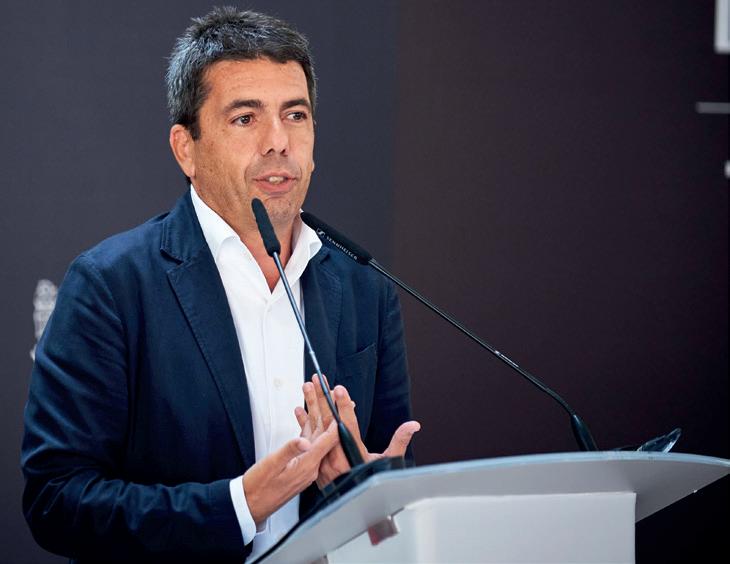
home,” he said. “There are cases of elderly owners who rent out their property to cover nursing home costs but tenants then stop paying and become squatters.”
He promised that victims will be helped ‘straight-away’ through the new support system.
Police are also being armed with new anti-squatting pro-
tocols and guides to act quickly against occupation attempts.
Special training starts this month for regional and local officers, while the 112 emergency number will now coordinate rapid responses and launch express eviction procedures.
Cops will also get instant access to the property registry to verify who the real owner is –on the spot.
METROVALENCIA trains have finally resumed to ‘ground zero’ areas hit by the October floods. Work costing €140 million restored the Valencia Sud to Castello line, serving l’Horta Sud and La Ribera. This means Metrovalencia lines 1, 2 and 7 are back to their full pre-October 29 service.
Night trains will return on Fridays and Saturdays from August.
Shuttle buses between Paiporta and Torrent took around 90 minutes; the train journey now takes just 20 minutes.


17 YEARS OF ENVIRONMENTAL NEWS
Scan to find out more

SPAIN could face more electricity blackouts this summer unless urgent steps are taken to stabilise the power grid, experts have warned.
The warning follows the April 28 outage, which plunged large parts
SPAIN is baking through an early summer heatwave, with Mediterranean sea temperatures soaring to levels more typical of late July or August.
Coastal waters are currently 3–3.5°C above average, while parts of the Med near Corsica and Sardinia are up to 5°C warmer, according to Eltiempo.es.
Figures from the Centre for Mediterranean Environmental Studies (CEAM) show sea surface temperatures reaching 23.5°C – unusually high for mid-June.
Buoys recorded 25–26°C in the Gulf of Valencia, Balearic Sea and southern Tarragona, while Mallorca hit 27°C – temperatures once reserved for August.
Experts blame the ‘tropicalisation’ of the Med on recent heatwaves and the lack of offshore winds, creating steamy, August-like conditions across coastal Spain.
The hot, humid sea air is fuelling powerful storms inland, bringing heavy rain, hail and strong winds.
Along the coast, residents are enduring tropical nights, where night-time temperatures stay around 25°C, with little cooling relief.
Cities like Alicante are suffering from the combined effects of warm air masses, cloud cover, urban heat islands and a warming sea –all contributing to muggy, sleepless nights.
Sea breezes, once a natural cooler, are now weakening as water temperatures climb.
Experts also warn the heat is damaging marine ecosystems, with native species struggling to survive and pollution compounding the threat.
of Spain and southern France into darkness. Investigators blamed a sudden imbalance in frequency and inertia. Though temporary fixes were introduced, such as boosting gas
and hydro generation, they are not sustainable long term and could hike bills.
Experts fear a repeat during sunny summer days when solar power dominates – and traditional generators, which stabilise voltage,
are sidelined. Officials confirmed a major overvoltage during the April incident. Plans to integrate renewables into voltage control are stalled in regulation, leaving the system exposed as demand soars.
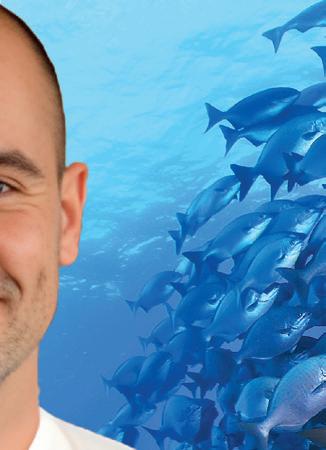
but expert warns much more needs to be done
SPAIN has taken a major step in ocean conservation – but much more must be done to protect its seas, a leading marine scientist has warned.
Prime Minister Pedro Sánchez announced the expansion of Spain’s marine protected areas (MPAs) at the recent UN Ocean Conference in Nice, France.

By Samantha Mythen
Currently, 21.3% of Spain’s waters are protected. But with five new MPAs added to the Natura 2000 network, that figure is expected to reach 25% by the end of 2025. The country is now edging closer to its goal of safeguarding 30% of its seas by 2030.
However, Oscar Esparza Alaminos, Marine Protected Areas Coordinator at WWF, cau-
Join the WWF Spain Philanthropy Club and visit conservation projects.
Next trip: Alto Tajo (Guadalajara), 3–5 October
It’s a unique and committed way to care for the planet from the inside out.
Find out more with no obligation: wwf.es/club or club@wwf.es

to safeguard marine life
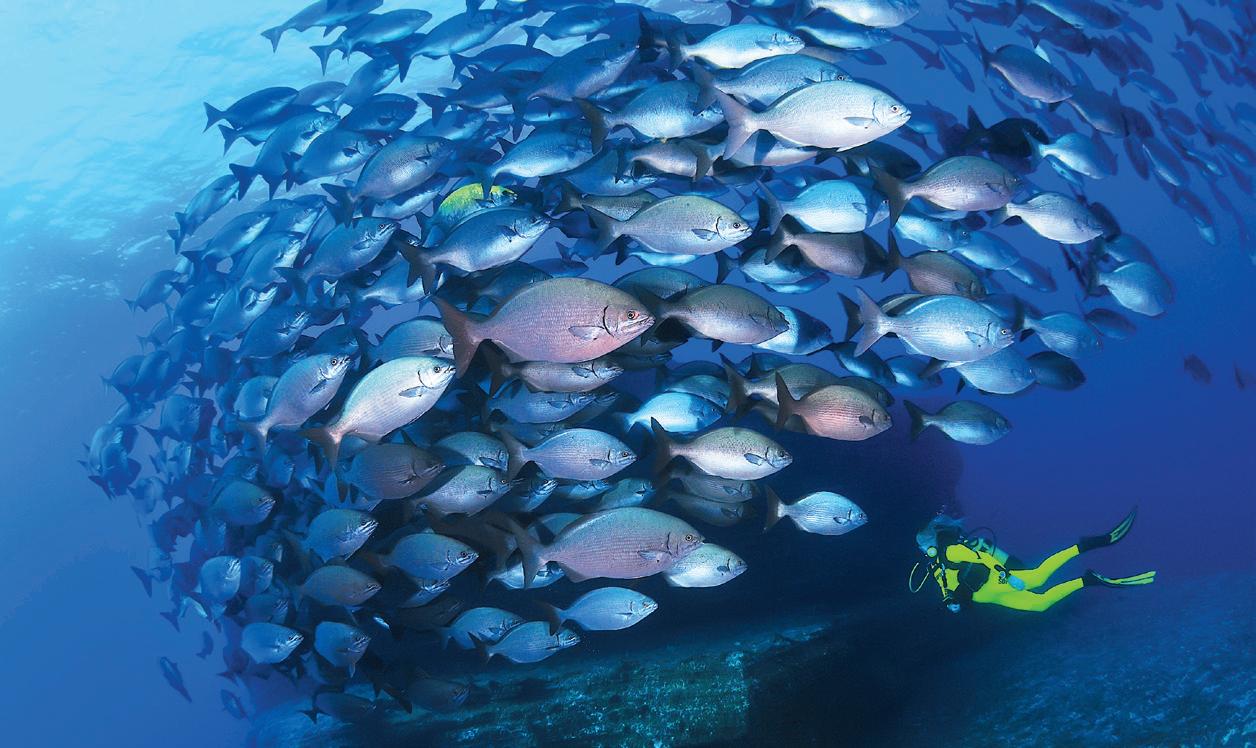

tioned that most MPAs still lack basic management plans – and few are properly monitored.
“The next challenge is to move from promises on paper to real protection at sea,” he told the Olive Press. “The ocean gives us so much: over half the oxygen we breathe, climate regulation, and it’s home to more than half of all life on Earth.”
WWF supports the creation of MPAs to conserve biodiversity, block destructive activities, and build climate resilience. But without proper enforce-
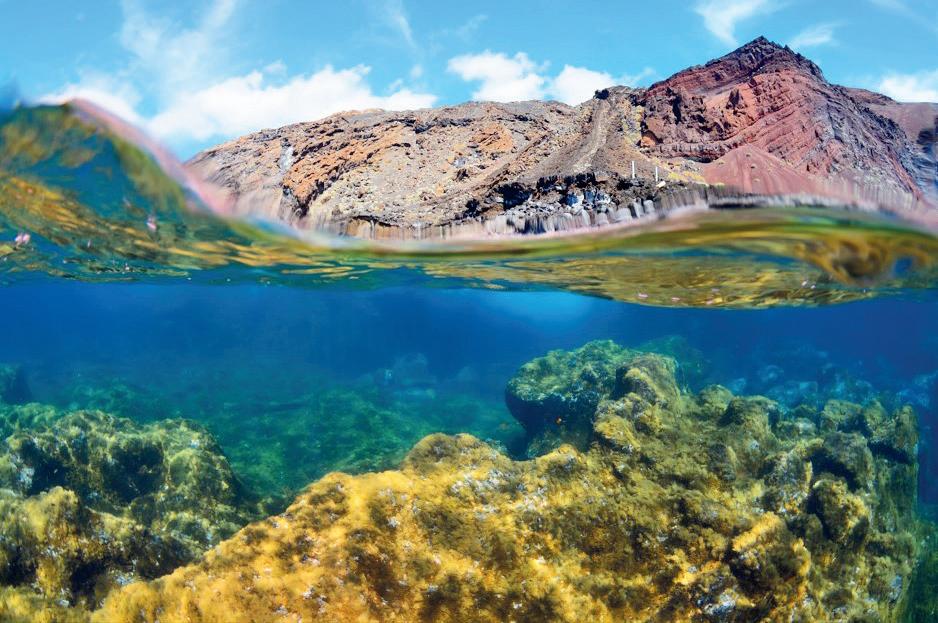
ment, Alaminos warned, ‘they’re just paperwork’. He said many sites – such as Cala Ratjada in the Balearics and the Medes Islands in Catalunya – are already acting as marine nurseries helping fish stocks recover.
“But they need to be science-based, well-designed, and enforced with input from all stakeholders,” he said.
The new MPA’s are the Mallorca
Channel Seamounts; the Seco de Palos Seamounts and Pitchmark Field; the Capbreton Tributary Canyon Systems; the Alboran Sea Banks and Gorges; and the Catalan Central Coast Marine Area.
Spain is also preparing to create the country’s first fully protected marine national park in the Mar de Las Calmas, off El Hierro in the Canary Islands. The law would protect vital ecosystems like black coral forests, as well as habitats for dolphins, whales, endangered loggerhead turtles, and the critically endangered angelshark.
Another protected area will be set up north of Menorca after conservation group Tursiops confirmed it was the only known breeding ground for sperm whales in the Mediterranean. Since 2019, 35 sightings of females and calves have been recorded there.
“It’s a unique opportunity to lead the way in marine conservation,” said Alaminos. “Hopefully it’s the first of many marine national parks.”
Spain has already made waves internationally. It was the first country to ratify the High Seas Treaty, backs a moratorium on
deep-sea mining, and is pushing for a global treaty on plastic pollution. An estimated 8 million tonnes of plastic enter the Mediterranean every year. Alaminos stressed that individual action is also key. “Tourists and citizens can help by making small choices that add up,” he said.
This includes using reef-safe sunscreens, eating local sustainable seafood, choosing eco-moorings over anchoring on seagrass, reducing single-use plastics, and taking part in citizen science projects like Observadores del Mar
But he emphasised that real change must come from the top.
“It’s essential that governments match their words with action, and that MPAs are properly managed with local community involvement,” he said. “Strong institutions are key to holding them accountable.”
He also highlighted the need to control mass tourism in the Balearics and Canary Islands.
“We must balance tourism with ecosystems’ carrying capacity to ensure long-term sustainability,” he added. “Protecting the ocean means protecting the foundation of life on our planet.”
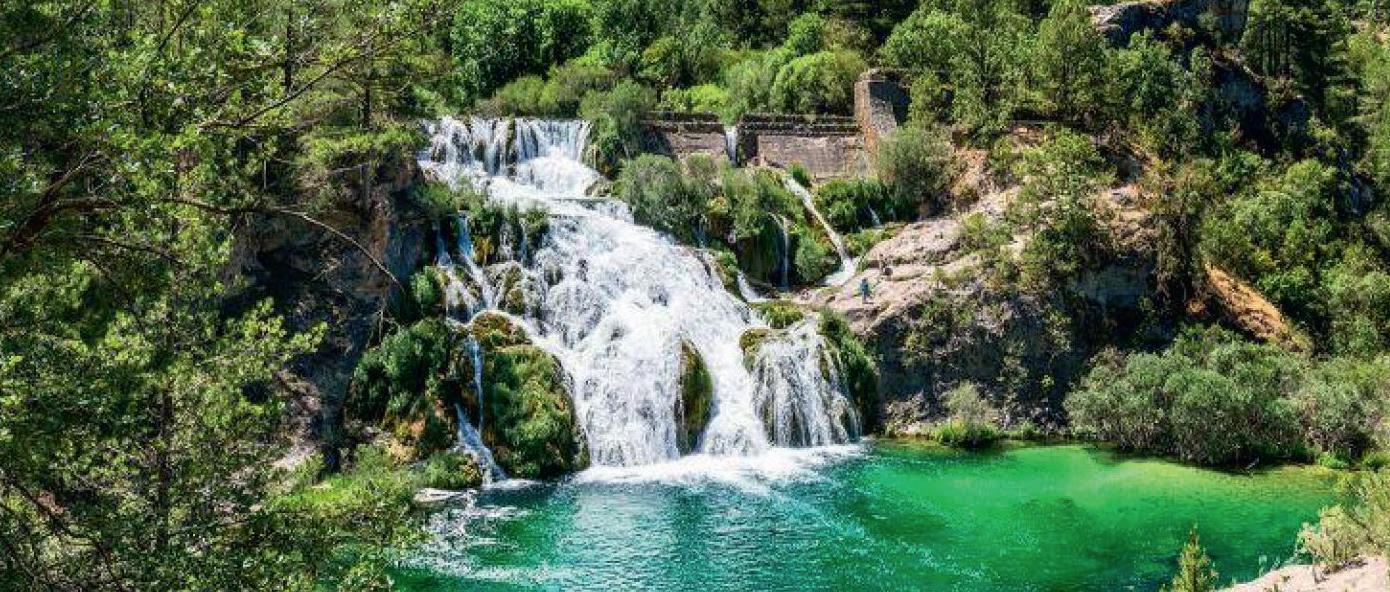
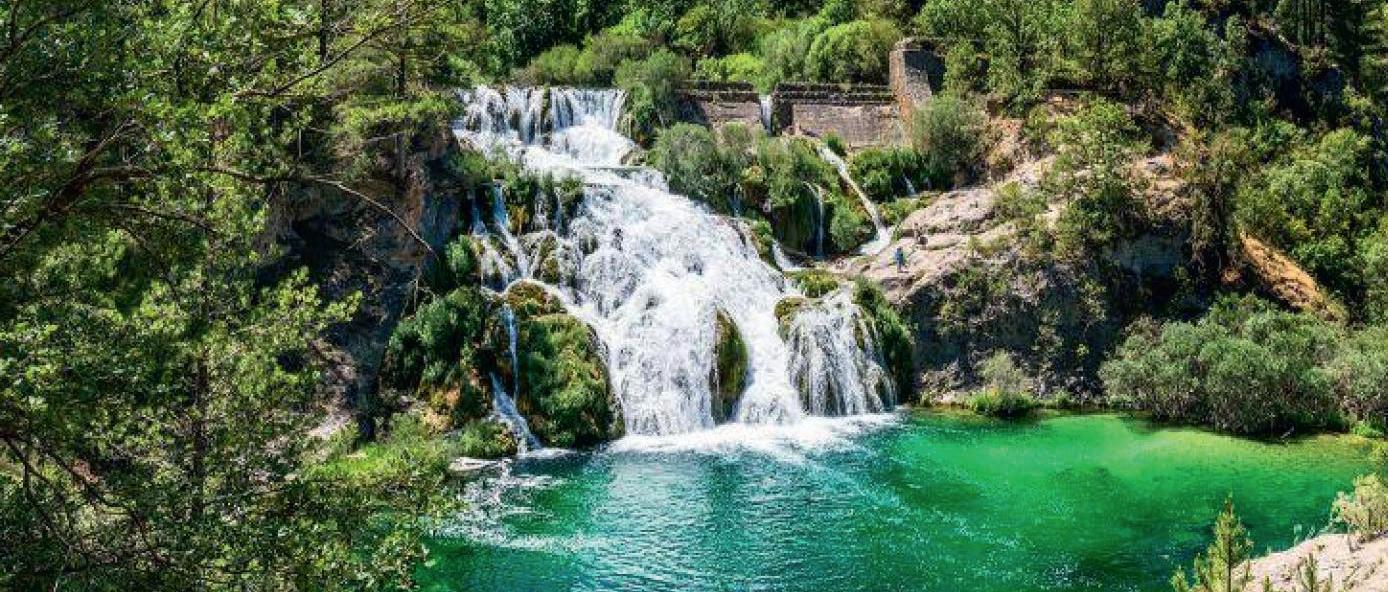

Voted top expat paper in
A campaigning, community newspaper, the Olive Press represents the huge expatriate community in Spain with an estimated readership, including the websites, of more than two million people a month.
AS journalists, we can’t accuse the police or the courts in Spain of being corrupt.
Such serious allegations cannot be thrown around, or bandied about in the printed word, unless you know it 100% and you have the evidence to prove it.
It’s one thing to murmur the words among confidants in private, it’s another thing to hear it from people who have had terrible experiences at the hands of these institutions.
But the police and the courts are the two pillars of law and order in this country that we call home and undermining trust in them is never something to do lightly.
The case of Brett Dryden, 35, found dead in his blood-spattered home with an axe-wound to his head, could be framed as a one-off.
When all signs point so clearly to foul play that even your pet cat can figure it out, the fact that the police try to pass it off as an accident could be just a bizarre and distressing anomaly.
But the case of Nathan Osman, 30, found dead at the foot of a cliff and declared ‘suicide or accident’ (take your pick it seems), again has similar hallmarks.
In both cases, the families residing over in the UK, without Spanish language skills nor knowledge of Spanish bureaucracy, had to carry out their own murder investigations in the wake of police inaction.
We can reveal that Sandra Adams, the mother of Brett Dryden, has formed a makeshift support group with the family of Nathan Osman, sharing tips such as on how to find a good lawyer who will not just take your money and do nothing.
And not just his family. The families of other high profile deaths of Brits in Spain are also in this group, but they asked us to not be mentioned.
There are enough very similar cases to assuredly say it is not a one-off.
British families are sometimes denied justice in Spain, the deaths of their loved ones buried under the carpet for whatever motivation of convenience.
Which is why it’s so important that we speak out when it happens, and that the public listens when we – and other outlets – speak.
It’s the only thing that might get the families the justice they so sorely deserve.
PUBLISHER / EDITOR
Jon Clarke, jon@theolivepress.es




Dilip Kuner dilip@theolivepress.es Walter Finch walter@theolivepress.es
Yzabelle Bostyn yzabelle@theolivepress.es
Samantha Mythen samantha@theolivepress.es
Tom Ewart Smith tom@theolivepress.es
ADMIN Victoria Humenyuk Makarova (+34) 951 154 841 admin@theolivepress.es

Alex Trelinski alex@theolivepress.es
Joshua Parfitt josh@theolivepress.es
Dylan Wagemans dylan@theolivepress.es
MANAGER
Estefania Marquez (+34) 658 750 424 accounts@ theolivepress.es



ENQUIRIES (+34) 951 154 841 distribution@ theolivepress.es

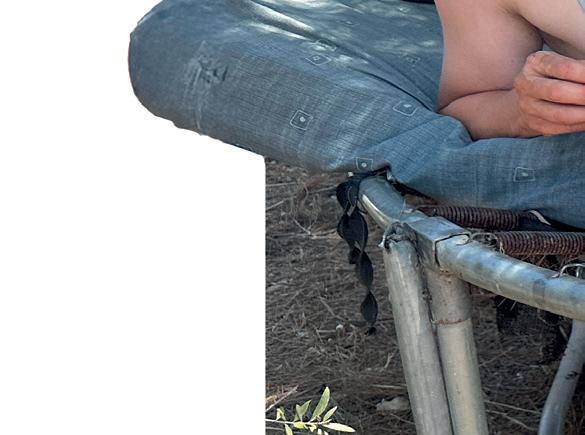







‘I’ve got a good job at Ibiza airport but I have to live in a shanty town!’
By
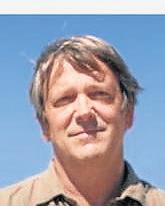
WORKERS on the party island of Ibiza have told the Olive Press the rental situation is ‘set to explode’. It comes as we discovered hundreds of them living in makeshift homes in scrubland just outside Ibiza town, or parked up living in vehicles.
To make matters worse, the authorities have recently started clearing one camp near the supermarket Mercadona and are threatening to clamp down on others.
At one rapidly expanding shanty town near the ITV (MOT) testing centre - as shown on Sky News last month - there are hundreds camped together.
It is the same situation close to the famous party resort San Antonio.
This week the Olive Press found a number of other smaller camps near Playa D’en

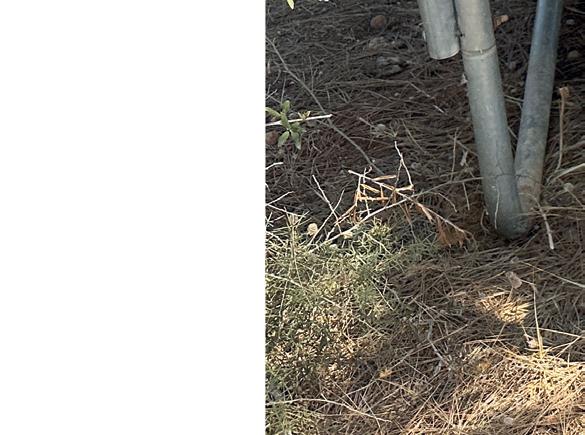
from
In the lee of blocks of luxury apartments costing upwards of half a million euros they showed us how they cooked on outdoor stoves and washed with water bottles.
Some who asked not
to be photographed had small children.
But these people are not Gypsies, travellers or illegal immigrants. They are legal European workers who have been hired on six month work contracts this summer.
I spoke to three employees - with well paid full time contacts - having to live in these dehumanising conditions.
They all blame the local and national government for years of under-investment in public or cheap housing.
One, a Roma-
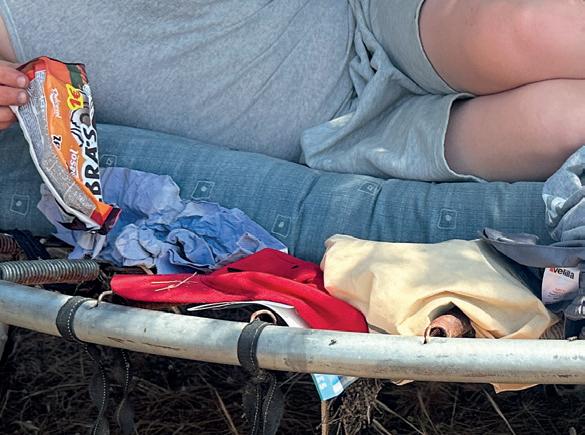
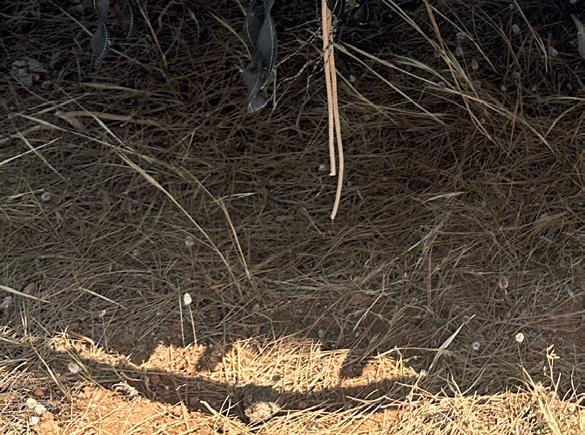
nian called Julio, 33, is in his second year working for a parking company at Ibiza Airport.
Half asleep on a makeshift bed made out of a trampoline base under a tree on scrubland, his life was spread out in bags around him. A fellow worker slept in a bizarre car seat bed next to him.


SOME names just linger in the background of our minds, like dusty old books on a shelf we’ve never opened. El Cid is one of those names.






Some of us know there was a Hollywood film about him (Charlton Heston, brooding with a sword), others vaguely rememsomething about a Spanish knight, and the rest probably couldn’t pick him out of a line-up.





Julio showed me his uniform and liveried cap (we are not naming the firm to protect him) before explaining: “It’s a decent, well


As Cambridge University professor Nora Berend releases her Spanish language biography of El Cid, Michael Coy takes a delve into the life of the legendary figure
By Michael Coy













Deposito Legal MA: 498-2019










But here’s the thing: was real. He wasn’t just a film character or a classroom footnote. His real name was Rodrigo Diaz de Vivar, and he died on July 10 1099 after living a life that would put most blockbuster plots to shame. He was born in Castile - north of Madrid, in a part of Spain where they still claim the ‘purest’ Spanish is spoken. If the UK has the Home Counties as its cul-





















tural heart, this bit of Spain is its equivalent. Rodrigo was born right in the middle of it, and over the years he went from local lad to warlord to the ruler of Valencia.


But don’t let the ‘hero’ label fool you. His story is far from straightforward. Yes, he was a brilliant warrior. Yes, he inspired a famous medieval poem El Poema del Mio Cid). And yes, he eventually became a symbol of Christian Spanish virtue. But peel back the myth and what you find is a far messier, more interesting person. Rodrigo - El Cid - was a man of his time, and his time was chaotic.


















The Reconquista was in full swing, a centuries-long tug-ofwar as Christian kingdoms fought to re-


claim land from Muslim rulers across the Iberian Peninsula. And El Cid? Well, he didn’t always stick to one side. He fought for two Christian kings, Sancho and Alfonso. When that fell apart, and Alfonso banished him, El Cid shrugged and joined the other side - literally. He took up arms for Muslim rulers in Zaragoza, defending the very cities he’d once attacked. The name ‘El Cid’ itself comes from the Arabic As-Sayyid, meaning ‘The Master’. And he wore it proudly. At one point, he even launched his own campaign and seized Valencia, ruling it more or less independently. Not quite the holy Christian crusader of legend, then. More a ruthless, adaptable military leader who knew how to play both sides and win. He was, in modern terms, a mercenary. Loyal to no cause but his own survival and success. And yet, over the centuries, he was rebranded into a patriotic icon. Castile’s shining knight. The ideal Spaniard. It’s fascinating how stories shift like thathow someone can live one kind of life, and be remembered for another. Maybe it’s human nature. We like clean lines. Good versus evil. Heroes and villains. But real people, especially the interesting ones, rarely
into neat boxes. So what do we do with someone like El








ASPECTACULAR new geological viewpoint has been unveiled high in the Cantabrian Mountains, offering jaw-dropping panoramas of one of Spain’s most dramatic valleys.
Perched near La Farrapona in the rugged Saliencia Valley, the sleek steel-and-wood platform was designed by Puerto & Sanchez Arquitectos after winning a public design competition run by Somiedo Town Hall under its Sustainable Tourism Plan.
Set at the highest point of the








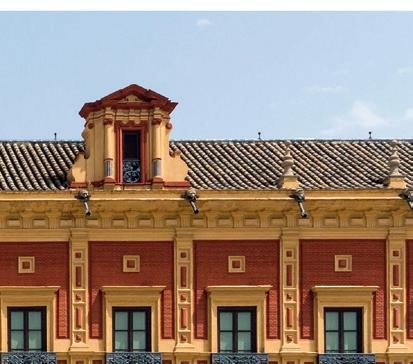
The Spanish style that took Spain and the Americas by storm - and then died out





valley, the lookout appears to float above the landscape, giving visi-

ter with the region’s ancient rock formations – some of the oldest in the Iberian Peninsula.
The minimalist structure blends into its wild surrounds, with no flashy features – just pure mountain majesty and 360 degrees of raw geology.




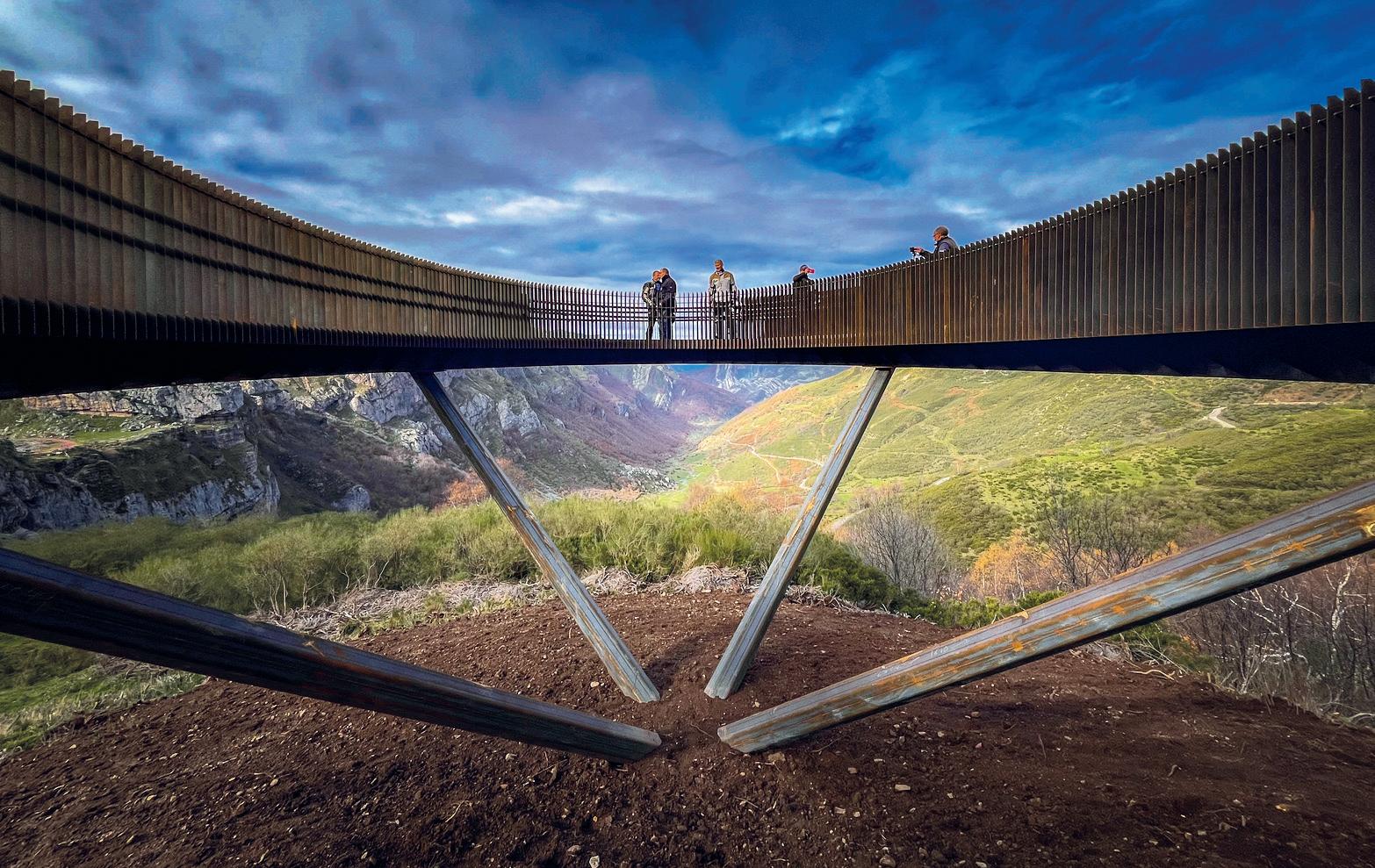
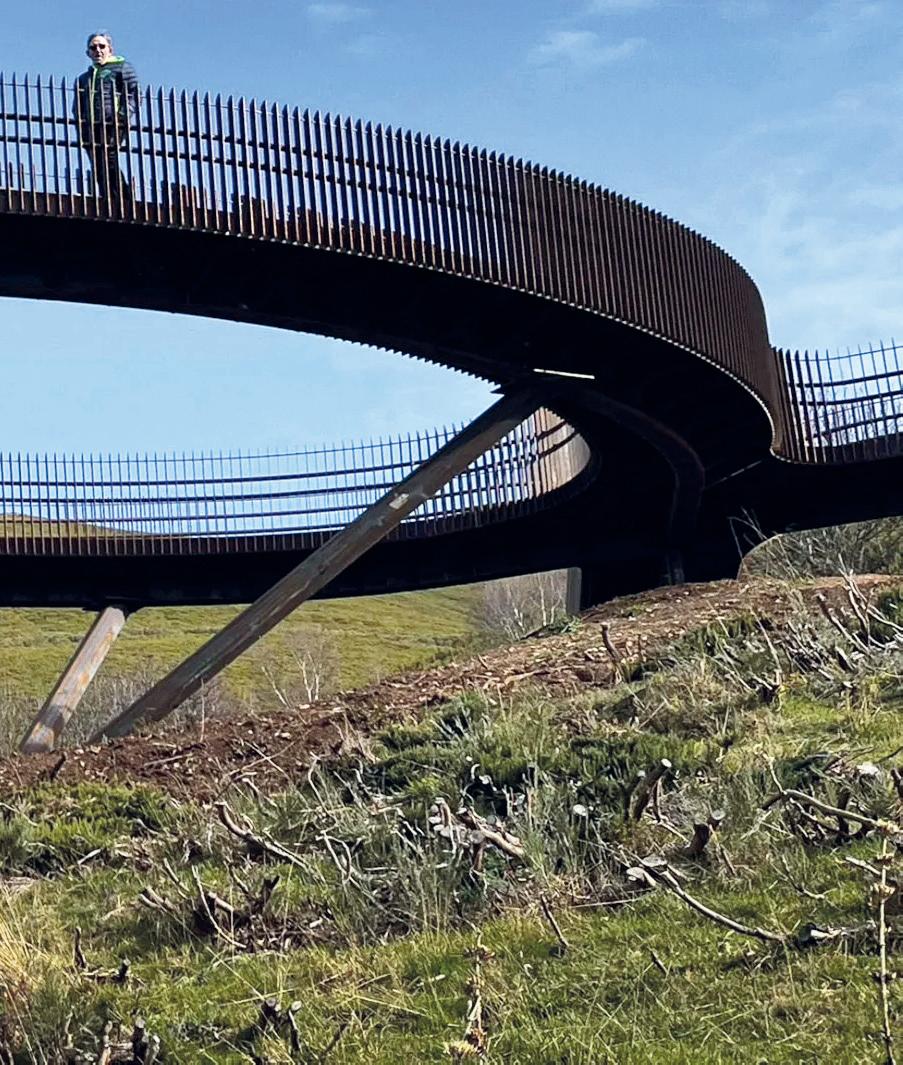
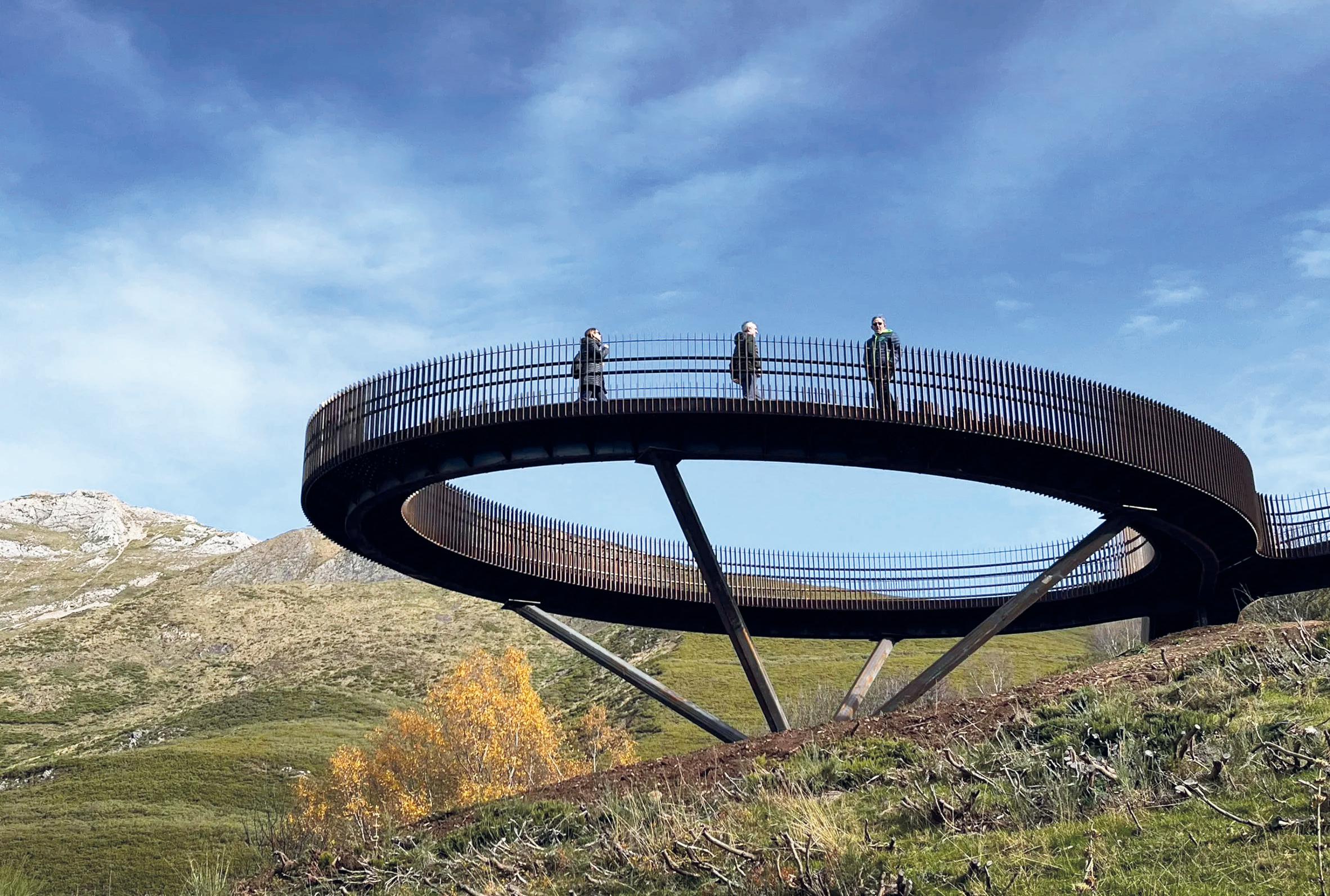
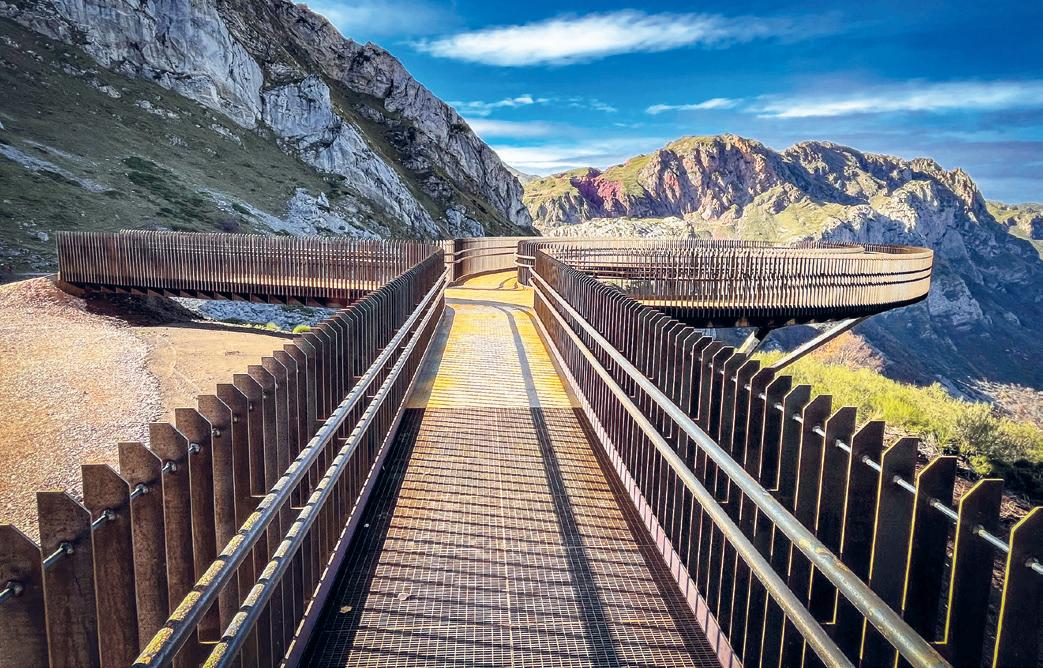
SPAIN’S high-end property market is showing no signs of cooling, with luxury home prices jumping an average of 15% over the past year.
According to the study looking at homes costing over €860,000 – the most dramatic price hikes have been in some unexpected places.
Oviedo, in Asturias, leads the charge, with prices rocketing by an astonishing 43% in just 12 months.
It comes as the historic city’s football team just got promoted back to La Liga for the first time in a quarter of a cen-
Spain’sluxurypropertymarketgoesloco aspricessoaracrossthecountry tury.
By Walter Finch
Guadalajara, near Madrid, follows with a 35% jump, while Madrid itself has seen prices climb 28% - pushing the capital’s luxury threshold (the top 10% of properties by price) to €1.85 million. San Sebastian meanwhile is up 26%, Lugo and Las Palmas are both up by 22% confirming healthy demand in both the north of Spain and the Canaries.
Palma de Mallorca remains Spain’s most exclusive market, where luxury homes now start at €2.1 million – the only city to cross the €2 million threshold. Barcelona showed more modest growth at 8%, with luxury defined from €1.29 million, while Malaga has officially entered the million-euro club, with prices starting at €1.045 million.
For buyers with tighter budgets, Zamora offers the cheapest entry point to luxury – just €240,000 – followed by Palencia (€290,000) and Huelva (€293,250).
At provincial level, the Baleares top the list with luxury homes starting at €2.95 million, followed by Malaga province (€2.2m) and Madrid (€1.56m). Ciudad Real ranks lowest, where €225,000 gets you a top-tier home in
the top 10%.
The surge is being fuelled by strong international interest – particularly from northern Europe – combined with domestic demand, low interest rates and ongoing economic recovery.
Only Soria saw prices fall, dropping 9%, while Ceuta remained flat. Toledo, Santa Cruz de Tenerife and Pamplona each posted modest 4% gains.
The study by portal Idealista looked at data from all of Spain’s provincial capitals and regions between May 2024 and May 2025.
The European Commission has taken a firm stance against Spain’s long-standing practice of taxing non-resident EU property owners more harshly than Spanish residents—a move that could spell good news for the thousands of EU citizens who own second homes in Spain and have long felt unfairly targeted by the Spanish tax system.
Brussels demands fair play for EU property owners in Spain
At the heart of the dispute is Spain’s imputed income tax on homes owned by non-residents that are not rented out. While Spanish residents enjoy an exemption for their main home, non-residents—including EU citizens—must pay tax on a notional rental value of


29th -

their Spanish property, even if it stands empty. The imputed income is set at up to 2% of the cadastral (rateable) value, and the tax applied ranges from 19% to 24%, depending on the owner’s country of residence.
Brussels argues this treatment amounts to discrimination, breaching core EU principles such as the free movement of capital and workers. After years of warnings, the Commission has now referred Spain to the Court of Justice of the European Union
SPAIN’S third largest bank CaixaBank has launched a new online property portal called Facilitea Casa, offering more than 40,000 homes for sale or rent across the country.
The digital platform functions as a marketplace where partner estate agencies can list and manage their properties, whilst CaixaBank provides financing support to buyers and renters regardless of whether they are existing customers.
The portal operates similarly to established platforms like Idealista, but with the key difference that CaixaBank will handle the mortgage and loan arrangements whilst partner agencies manage the actual property sales and rentals.
The bank will not directly sell properties itself.
(CJEU), citing both the imputed income tax and the rules on ca-
EU takes Spain to court over discriminatory property tax rules that penalise foreign second-home owners
pital gains tax deferral as examples of unequal treatment.
Capital gains deferral: another unfair burden on non-residents
A second issue relates to the deferral of capital gains tax when a property is sold on instalment terms. Spanish residents are allowed to defer their tax liabilities in line with when they actually receive payments, easing the cash flow burden. Non-residents, however, must pay the full tax amount immediately, even if they won’t see the money for years. This effectively penalises cross-border sellers and, according to the Commission, violates the EU’s
A SWEEPING new housing package will hit foreign buyers, investment trusts (REITS) and empty homeowners in a bid to ease the housing crisis and prioritise long-term rentals for locals.
A new state tax, potentially as high as 100%, is set to apply to property purchases by non-EU, non-resident buyers.
So far there will be exceptions for those buying in the Basque Country and Navarra, while EU residents and VAT-registered professionals will be exempt.
Tourist flats offering stays under 30 nights in towns with over 10,000 residents will see VAT jump from 10% to 21%, aligning them with hotels.
legal framework. Spain has argued that its tax laws are consistent with EU law, but the Commission considers its response inadequate and has now escalated the matter to the CJEU.
Good news for foreign homeowners—and long overdue This legal action is likely to be welcomed by foreign homeowners in Spain—many of whom are retirees or holidaymakers from other EU countries—who feel they’ve been treated like cash cows by the Spanish tax authorities. Unlike residents, they’ve had to pay tax on properties that generate no income and face stiffer rules when se-
REITS (or real estate investment trusts) will face a tax hike from 15% to 25%, unless over 60% of their stock is allocated to affordable rentals. They will also be fully exempt if they reinvest profits into affordable housing within three years.
A new progressive vacancy tax meanwhile, will penalise owners of empty homes.
This will stack on top of existing annual IBI taxes, with town halls encouraged to apply additional surcharges to unoccupied properties.
If you’re considering investing in Dubai, this is the event you don’t want to miss. Join leading real estate experts for a special two-day Dubai Property Roadshow in Marbella, hosted by local agency Property on the Med, in collaboration with top Dubai real estate companies Provident Estates and Damac Properties — the second largest developer in Dubai.

Venue: Puente Romano Beach Resort, Marbella
Dates: July 25 & 26, 2025
This luxury event offers a unique opportunity to discover why Dubai is one of the fastest-growing property markets in the world. Compare investment prospects between the Costa del Sol and the Gulf region with direct access to developers, agents, and industry insiders.









lling up.
If the Court rules in favour of the Commission, Spain may be forced to revise its tax legislation and bring non-resident EU citizens in line with residents. That could mean the end of imputed rental income tax on second homes, and fairer treatment when it comes to capital gains.
What happens next?
Spain now awaits its day in court. A ruling from the CJEU could take months, but if the court sides with Brussels, Spain will have little choice but to change its laws. In short, this case could mark the end of what many see as institutionalised tax discrimination against non-resident EU property owners in Spain—something that has cast a shadow over cross-border property ownership for too long.
The government also wants to extend tax relief for energy-efficient renovations and to offer income tax breaks for landlords charging below official local rental prices. Housing Minister Isabel Rodríguez explained the measures are necessary to tackle speculation, clamp down on illegal tourist flats, and bring homes back onto the market.
The proposals form part of Prime Minister Pedro Sanchez’s 12-point housing plan and are expected to be debated in Parliament in the coming weeks, The minority PSOE government will certainly need backing from other parties in order to get any of their plans into law.
Exclusive Two-Day Event for Investors — July 25 & 26 at Puente Romano Beach Resort








“Dubai is an incredible, dynamic place to invest,” says Dean Spearpoint, co-founder of Property on the Med.










“These roadshows have taken place globally, and now here on the Costa del Sol”



One of the most exciting resorts in the world









Dean, (right) originally from southern England, and business partner Robyn Govier, from Wales, began their jour-







To reserve your place or find out
ney in property after meeting in Estepona. What started as a holiday home management business has grown into a thriving sales agency known for fivestar service and international connections. Their friendly and transparent
info@propertyonthemed.com
Robyn +34 671 13 98 40
Dean +447490148207
www.propertyonthemed.com


approach has not only attracted investors eager to work with them, but also caught the attention of Dubai’s leading real estate agency, leading to this exciting collaboration. This is an open event — no tickets or purchase necessary.
Simply come along to learn, connect, and explore investment opportunities in one of the world’s most exciting real estate markets.



MARBELLA is cementing its reputation as Spain’s luxury property capital, with a string of €20 million-plus mega-mansions hitting the market.
Three standout properties include Villa Olympus, which previously sold for €27.5 million in 2022, Villa Altos Reales, currently listed at €25 million,
and Villa Sierra Blanca, expected to come in above €20 million.
However, these eye-watering sums are still well below the record €70 million price tag on Villa Bellagio, as reported by Olive Press Property last edition.
Prices per square metre have surged by over 60% in five years, driven by rising international demand and a younger, tech-savvy buyer profile, according to GC Studio founders Lucia Casaus and Alexis Gonzalez.











Let the train take the strain
SPAIN should invest heavily in regional public transport to ease its worsening housing crisis, say university researchers.
Improved transport links could encourage people to live outside overcrowded cities like Malaga, Valencia and Palma.
While places like Cadiz benefit from good tram-train connections, many provincial capitals lack decent options, forcing buyers to stay in pricey urban centres.
Affordable
Experts from the University of Barcelona, Complutense in Madrid and University College Dublin have concluded that better regional transport would let workers access city jobs from affordable surrounding areas, easing demand and tackling housing bubbles.
They say this long-term strategy should complement rental controls and restrictions on speculative buying, helping redistribute population pressure and support economic growth in neglected regions.
Villa Olympus, in Cascada de Camojan, spans 2,600 sqm across a 4,700 sqm plot and features seven en-suite bedrooms with natural stone, marble and limestone finishes.
Villa Altos Reales, on Marbella’s
GERMANS have overtaken Brits as the top nationality applying for mortgages in Spain during the first quarter of 2025.
Figures from property portal Idealista show that 16.6% of foreign mortgage applications came from Germans, followed by 14.2% from UK nationals. Foreign buyers now account for 3.6% of all mortgage activity in Spain.
Applicants from Switzerland made up 8.7%, followed by the
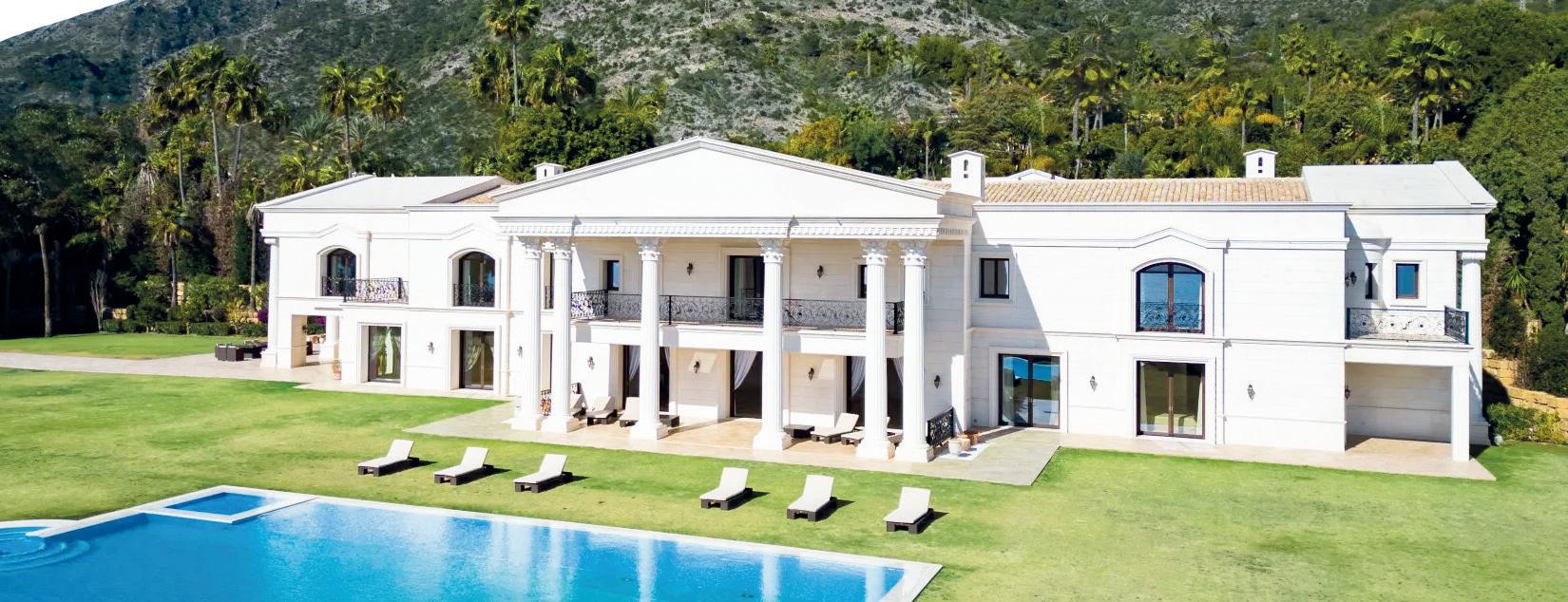
five bedrooms and energy-efficient features in the exclusive Sierra Blanca urbanisation.
Marbella's luxury market continues to attract high-net-worth international buyers. Recent developments have

included fashion-brand collaborations like those at Epic Marbella, with Fendi, Dolce & Gabbana and Karl Lagerfeld. GC Studio said Marbella is evolving into a hub of ‘exclusive, innovative projects tailored to global taste’.
By Alex Trelinski
United States at 7.7%.
Next up are buyers from France (7.5%), the Netherlands (6.9%), Ireland (4.4%), Belgium (4%), Italy (2%) and Sweden (1.9%).
Idealista particularly noted the rising interest from Swiss and American buyers, with Dutch demand declining and French figures remaining stable. German applicants stood out for borrowing below the average, requesting around €148,946. By contrast, Swiss and American buyers typically applied for over €200,000, reflecting stronger purchasing power. The average age of foreign applicants sits between 40 and
A HOUSING crisis is threatening to cripple public services in the Balearic Islands, with 45,000 affordable homes needed by 2030.
That’s the warning from Joaquín Chinchilla, president of APROVIBA, which represents small and medium sized developers across the islands.
“There are doctors and police refusing postings because rent costs more than their salary,” he said.
The islands already face a shortfall of 18,000 properties, set to grow as thousands retire in coming years. Developers say red tape, construction costs and poor access to credit are stalling progress. Chinchilla criticised the regional government for failing to unlock housing via the Balearic Islands Housing Institute.
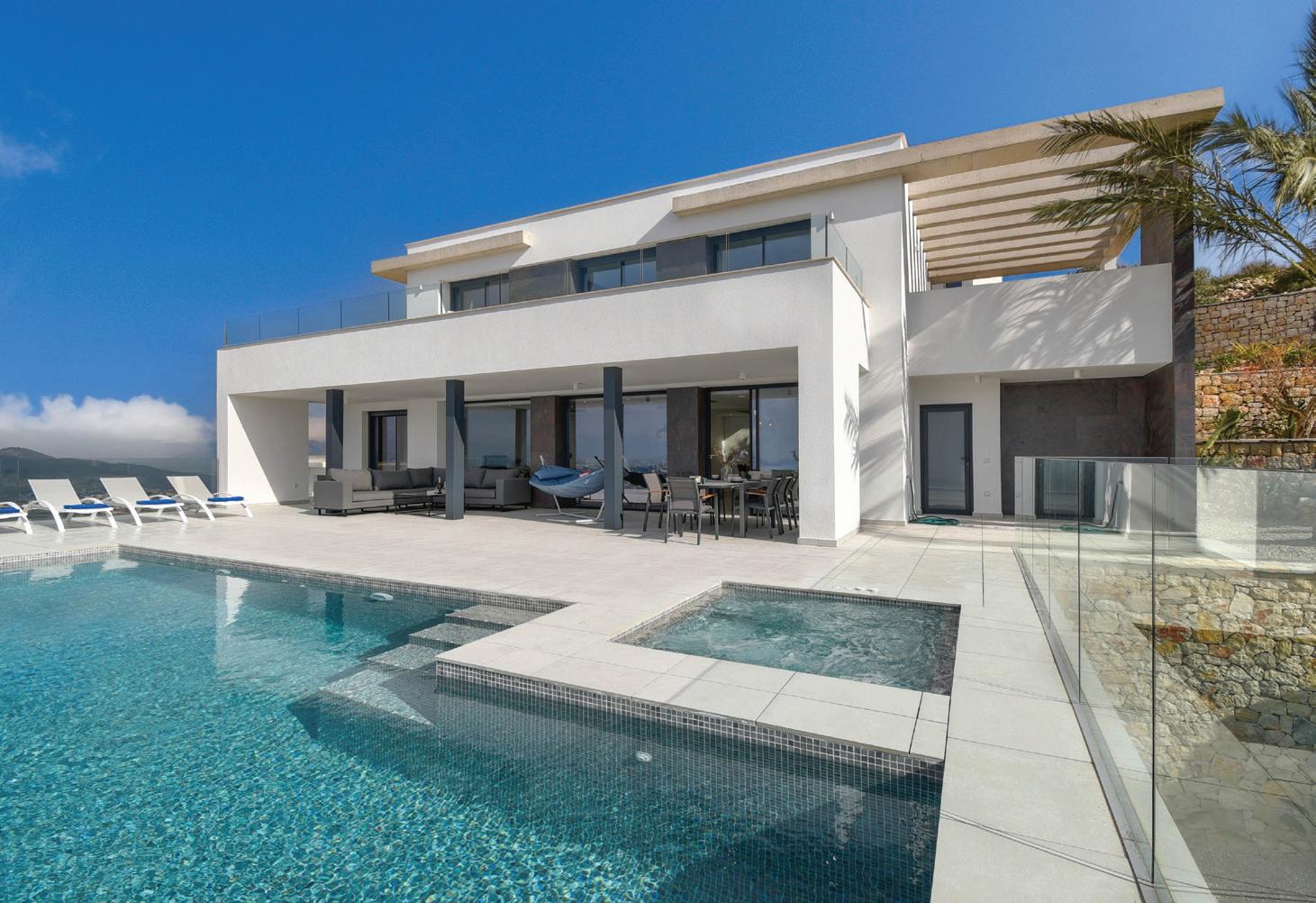
42, with Germans averaging 40. Foreigners request financing for an average of 74% of a property’s value. German applicants request 73%, while the French average 76% and the Swedes 71%.
Coastal regions remain the top target for foreign buyers. The Va-
He backed using vacant properties and praised new policies allowing taller buildings and urban land reclassification.
“Declaring the archipelago a stressed zone is urgent,” he said. Developers currently have 1,000 homes under construction but warn rising costs and labour shortages could derail progress.
See Homeless in Ibiza on page 6
lencian Community drew 26.8% of interest, followed by Andalucia (21.1%) and Catalunya (14.5%).
The most popular mortgage product among non-Spaniards is the fixed-rate loan, accounting for 84% of applications.
GOING solo in Spain isn’t cheap – especially in big cities or resort hotspots.
A new study reveals that to buy a studio, you’ll need to earn at least €18,080 net annually, plus have €40,480 saved for a deposit and fees. That’s based on a 30% income-to-housing cost ratio, a common financial benchmark.
Renting is even tougher. With studios averaging €800 a month, solo tenants should earn €32,000 a year to stay within limits. In Barcelona, you’d need €47,000 – more than in Madrid (€40,880) or Valencia (€40,000).
The most expensive cities to buy include Madrid (€32,160), Palma (€31,560) and San Sebastian (€27,480). Bargains can still be found in Santander (€9,240) or Ciudad Real (€10,040). Across provinces, the Balearics and Madrid are priciest, while Zamora and Caceres remain affordable. The study underscores how tough it’s become for single people – especially young professionals – to live independently in Spain.

By P OO LVILLAS












FROM the palaces of Spain to the cathedrals of colonial Mexico and the revivalist flair of early 20th-century California, the Churrigueresque style dazzled with theatrical excess and sculptural extravagance – a brief but unforgettable flourish in architectural history.
Whether you find it breath-takingly beautiful, or over-the-top hideous, there’s no denying that the style has
a strong flavour.

This extremely elaborate design tendency was in fashion in Spain from





By Michael Coy


rely manifests itself on flat walls. Doorways, being easier to work, are where it is most often




about 1680 to 1750. It spread to the Spanish colonies (notably Mexico), but is almost never seen anywhere else.





Churrigueresque is a branch of the tals, altars and facades. Because it relies on exaggerated detail, it ra-

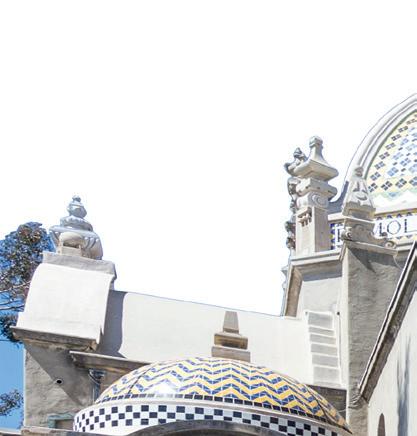


Baroque tradition – in fact, one of its most flamboyant and decorative expressions. While Baroque architecture is known for its drama and richness, Churrigueresque took those qualities to theatrical extremes, especially in its treatment of por-

The answer is, from its namesake, the sculptor Jose Benito de Churriguera, who died in 1725. He and his two brothers, Joaquin and Alberto, were jobbing craftsmen and architects, working in Salamanca and Madrid.















So where did this strange architectural form get its strange name?




























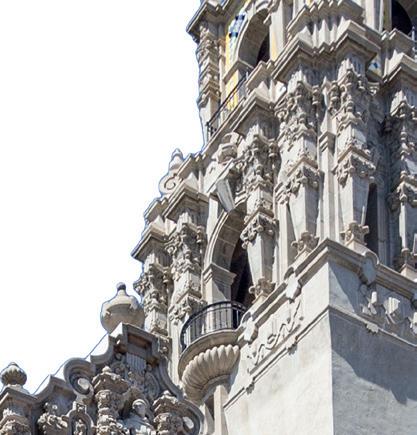

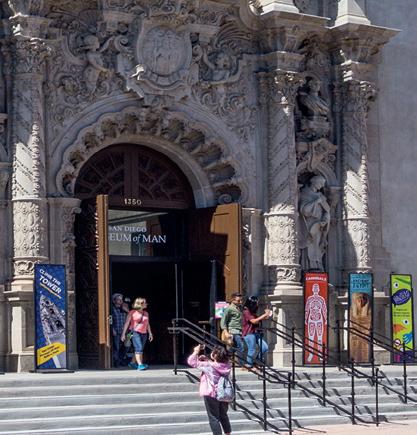
and






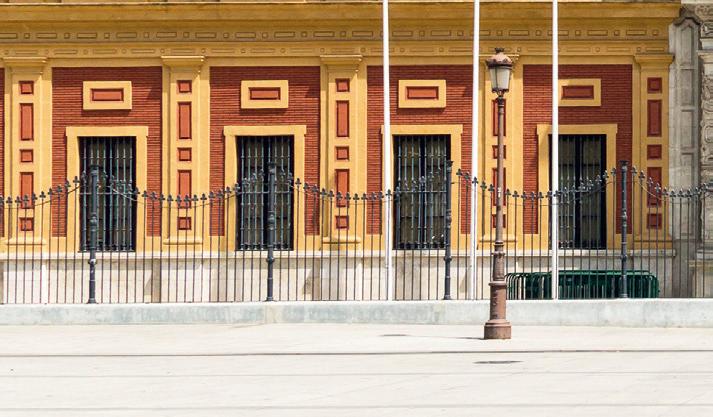
The flamboyant Spanish style Churrigueresque is known for its dramatic details, twisting columns and elaborate stonework that shaped churches and palaces from
What Jose and his family were striving for was not ‘rustication’ (which refers to rough, textured masonry), but rather a radical reworking of classical ornamentation – manipulating columns and entablatures into dramatic, sculptural forms that some would call grotesque. The brothers caught the












mood of the time. As they were awarded more and more contracts, they pushed their designs to new limits of ornamentation. Their work survives all over




Salamanca and in parts of Madrid. They even made it (briefly) to Andalucia, planning and building the facade of the San Telmo Palace in Sevilla, and a huge altar inside Ronda's Santa Maria la Mayor. Perhaps the finest examples of




other Spanish territories in 1767, they left behind institutions, funds and architectural legacies that contributed to a wave of construction in the churrigueresque style. Improbably, this highly ornate ‘look’ made it into the 20th century. In 1915, there was a Panama–California ‘expo’, at which two American architects made playful forays into the Spanish–Mexican format, triggering a new craze.

Churrigueresque




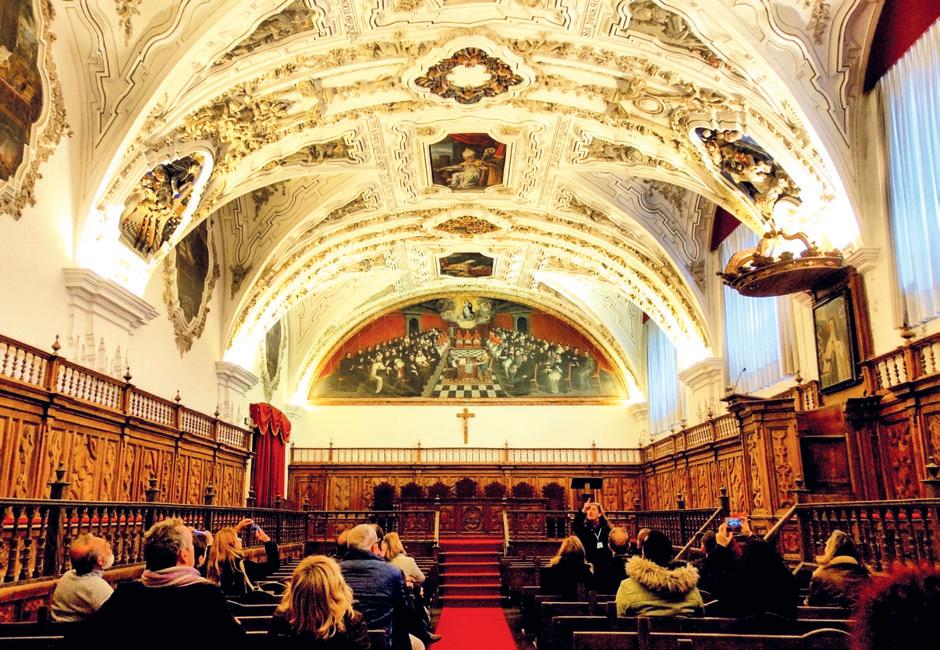

are to be found in Mexico. The Cathedral of Zacatecas and Santa Prisca in Taxco are outstanding specimens. What often happened was that Mexican churches like the Parroquia Antigua in Guanajuato stood unfinished for long periods of time. During the 18th century, these were often completed in grand style as money became available. When the Jesuits were expelled from Mexico and
Bertram Goodhue and Carleton Winslow developed ‘California Churrigueresque’, and many of their buildings still stand today in the city of San Diego. Could the style ever make another comeback?
We are reluctant to say ‘never’, but
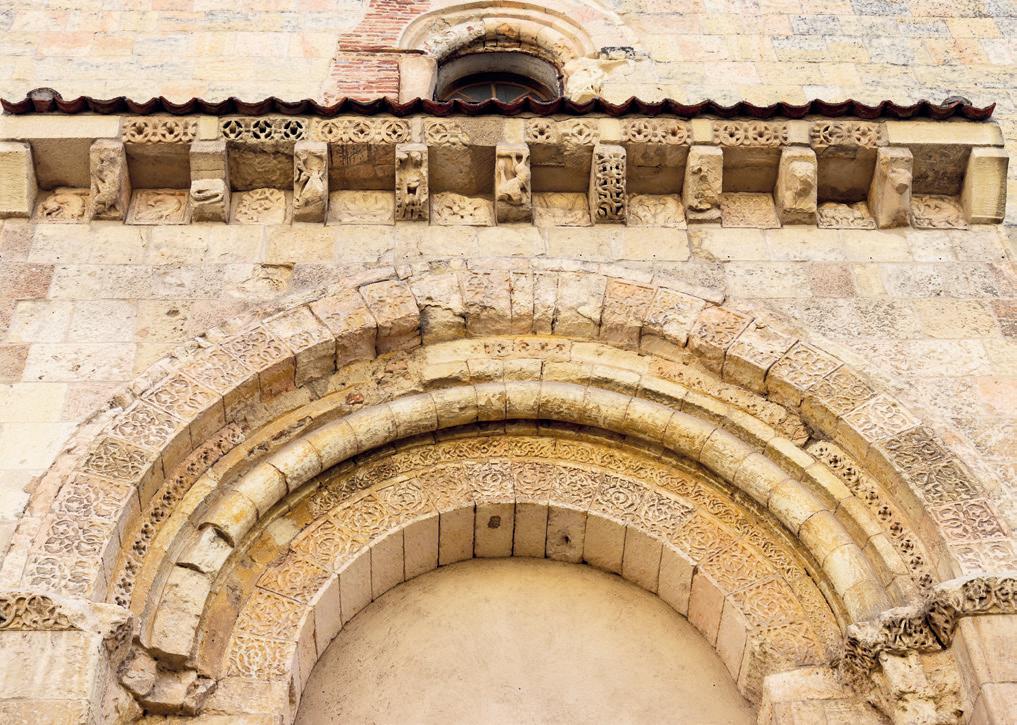
it seems unlikely. Modern materials do not lend themselves to protracted modelling. Furthermore, modern owners are cost-conscious, and do not see ornamentation as a high priority. Most important of all, churrigueresque was a form of ‘trompe l’oeil’ – an attempt to convince the observer that heavy stone is a light and nimble material.
Today we build lightly. There is no need to beguile anyone, and therefore no modern role for this hugely elaborate style.


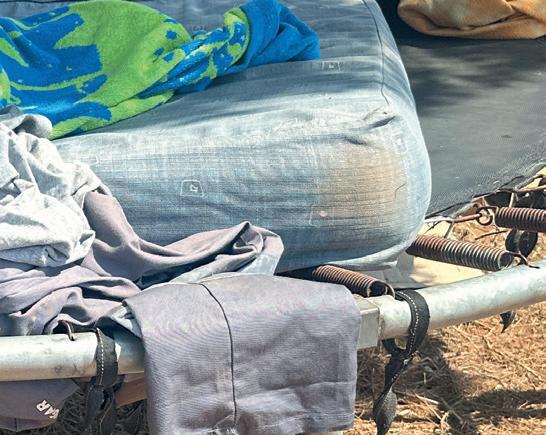
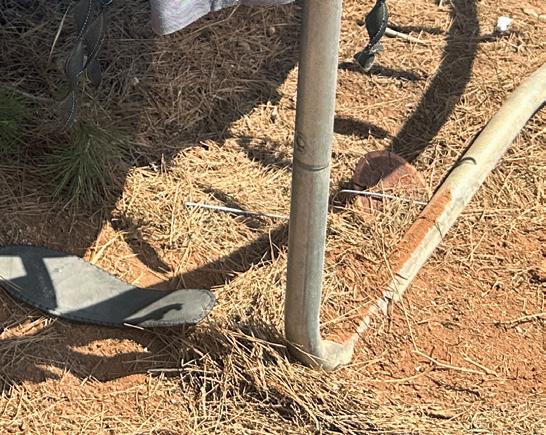





paid job and I like the work but it’s impossible to find somewhere to live.
“All the apartments I have seen are costing minimum €2,000 a month and the cheapest I found was a room for €1,000 in a shared flat with four others.
“By the time you’ve paid utilities there will be nothing left.
“Last year the boss of our company rented a big apartment for a few of the staff but this year he hasn’t, saying he can’t afford it.”
The father-of-two, whose family are back in Bucharest, continued: “The booming Spanish economy means there is lots of work. But at what cost?
“I’ve been thinking of moving over to Mallorca where I’ve heard it’s much easier to find a home.”
Another man living nearby in his car, alongside at least half a dozen others, told me he is a security guard at one of the clubs and has ‘no way’ to afford a flat.
The Morrocan, who insisted he was fully legal in Spain said: “There are some apartments with 12, even 15 people sharing, each paying

Maybe we can admire the skill, the tenacity, the sheer nerve it must’ve taken to stay afloat in a world constantly tearing itself apart. And at the same time, we can be honest about the compromises, the contradictions, the uncomfortable truths. He wasn’t perfect, but he was remarkable. If you ever find yourself in Burgos, you can visit his grave in the cathedral there. It’s a grand setting for a man who’s become larger than life. And as you stand there, maybe spare a thought for the real Rodrigo Diaz - hero, turncoat, warlord, legend. A man who lived by his own rules, and somehow still ended up a national treasure. Not bad for someone whose life can’t quite be pinned down.



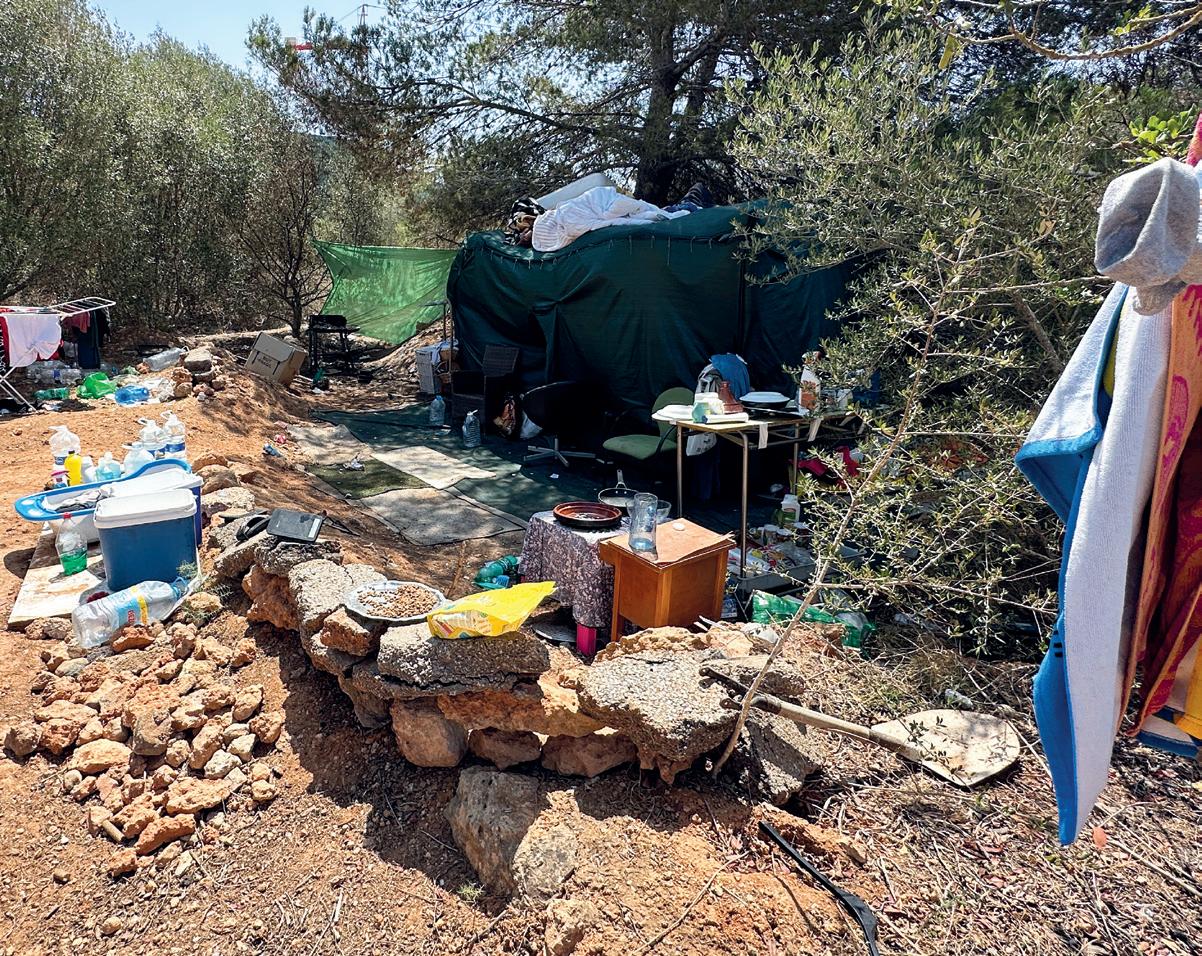
€400/500. I’d rather be alone here.”
It has become such a problem that many hotels and restaurants are desperate to find employees as the season is beginning.
With up to four million tourists set to descend on the island this year and only 2,300 official holiday rental properties, the statistics don’t add up.
Too many foreign owners have stopped renting for the season and are renting short term via rental sites and word of mouth between ‘friends’.
“
The number of illegal villas, apartments and rooms is impossible to calculate.
While fines of up to €500,000 can be imposed on illegal tourist rentals, some tenants are subletting via accommodation websites, with the real owners unaware.
The regional authorities insist they are working with Airbnb and Booking.com to clampdown.
Enrique Gomez Bastida from Ibiza Consell’s housing department told the Independent the rise of tourist villas and even extra rooms rented out in houses has stretched the island’s limited resources.
asked to remain anonymous, told me he has recently resigned to drive a taxi.
“I was well paid managing a hotel restaurant last year where we should have had nine staff but we only had four or five,” explained the Ibicencan who has worked in tourism for ‘over 30 years’.
“It was so stressful - everyone was doing double the work and I had to pick up all the slack most of the time.
“It was impossible and this year will be worse for sure.”
The Consell signed a deal with Airbnb to remove 300 illegal rental homes from the online platform
He admitted the soaring property prices have caused a housing crisis so severe that many municipal workers – including judges, police officers and medial workers – are now unable to afford to live there.
In March the Consell signed an unprecedented deal with Airbnb to remove 300 illegal rental homes from the platform.
Under the agreement moving forward, properties will now be removed ‘without discussion or appeal’, to stop costly legal delays.
But it has likely come too late for this summer.
One long time restaurant manager, who
Some hotel and restaurant owners have solved the problem by renting apartments - even entire blocks - to house their staff.
The owner of the island’s recently opened Nobu Hotel, Daniel Shamoon, confirmed to the Olive Press that his company, for example, had acquired enough property to guarantee fair rentals for its staff.
The dynamo behind dozens of hotels, including the Marbella Club and Puente Romano, described the situation on the island as ‘not easy’.
“
One policy the island is attempting to tackle is the number of rental cars and people bringing their own cars to the island.
According to a source the Consell is about to charge people a euro a day to come over in their cars and vans to try to stop them living in them.
Last month the Balearic authorities also sanctioned a law which means fines for illegal rentals will be reduced by 80% if owners agree to rent long-term as social housing.
In order to qualify, owners in Ibiza will have to rent them out for a period of five years via the Consell.
Prices will be set by the authorities with the most needy among the local 160,000 yearround residents being favoured first.


Get full ad-free access to our incisive website first-hand for just 50 cents a week with our special summer deal
WANT to stay ahead of the latest local news this summer?
Local news can directly affect your plans –from road and beach closures to weather warnings and fires, plus major local events, festivals and concerts.
The Olive Press helps you be the first to know what’s happening in your area and around the country.
Here’s why we are your best choice for local news in Spain. The Olive Press is trusted by the world’s leading media groups including the BBC, CNN, ITV, The New York Times, The Telegraph, Money Saving Expert and El Pais— - all have recently referenced us as an official source for Spain-based and expat-related news.
This month, our journalists, like editor Jon Clarke (left) appeared on national TV in Germany, America and the UK, while our stories ran in the Express, Independent and Mirror Leading global publications like the Guardian.co.uk have linked to and followed up OUR stories an incredible 34 times, while the Sun has done the same over 100 times. The Daily Mail links to 84 reports and America’s giant Vice. com some 40 times.

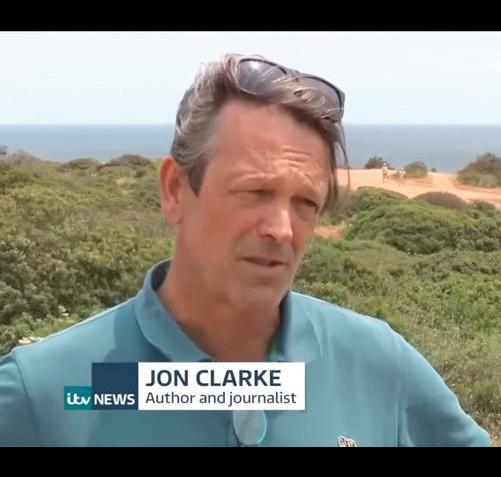
Meanwhile Rough Guides calls us the best English-language newspaper for your holiday in Spain, and we were voted Spain’s best expat newspaper by The Expat Survey Consumer Awards. And no surprise when one of young trainees Yzzy Bostyn just won the UK’s best young journalist of the year (2024) while working with the Olive Press in Spain. So we know you will get great value by taking advantage of our very special one off summer deal.
With your subscription:
● You get unlimited stories (non-subscribers get 2/ month)
● An almost completely ad-free experience
● Daily newsletters with the latest news in your area
● Specialist newsletters on travel, health and propert Willl you kick yourself for missing the news before heading out?



— 50%
WIN TICKETS TO SEE ONE OF THE GREATEST SONGWRITERS OF ALL TIME
HE was the man behind Stairway to Heaven and Whole Lotta Love
The songwriter behind Led Zeppelin, Robert Plant is one of the true legends of rock, up there with Jimi Hendrix, Mick Jagger and the Beatles.

Now the Olive Press is offering our readers two pairs of tickets to see him play in southern Spain later this month.

Headlining the 1001 Festival in Granada, it is guaranteed to be an amazing night. His wide-ranging powerful voice is guaranteed to set alight the event on July 26.
To win, you need to be a registered pay user of our website.
Once you’ve signed up you will get an email inviting you to enter the draw








November 29th - LOOKING FOR MORE CULTURE STORIES?
Scan to visit our website




SOMETIME around the reign of Emperor Nero, in the Roman city of Gades (now Cadiz), a man named Cinuras was laid to rest beneath a marble tomb.
The tombstone, likely paid for with his own hard-earned savings, bore an unusually bitter epitaph:
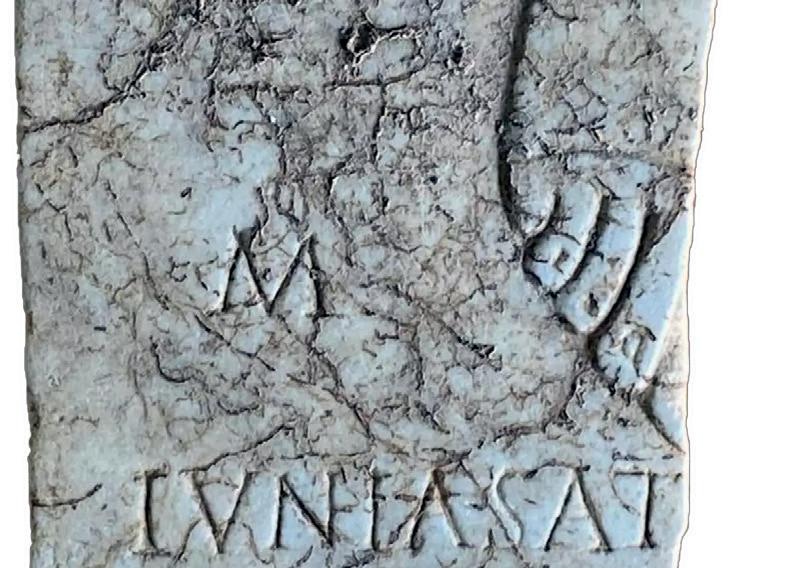
By Michael Coy

ly thought to be an isolated find has since revealed itself as a vast Roman necropolis: a sprawling ‘city of the dead’ that has remained hidden for centuries.
Today, Cinuras is just one of many voices rising from the soil.
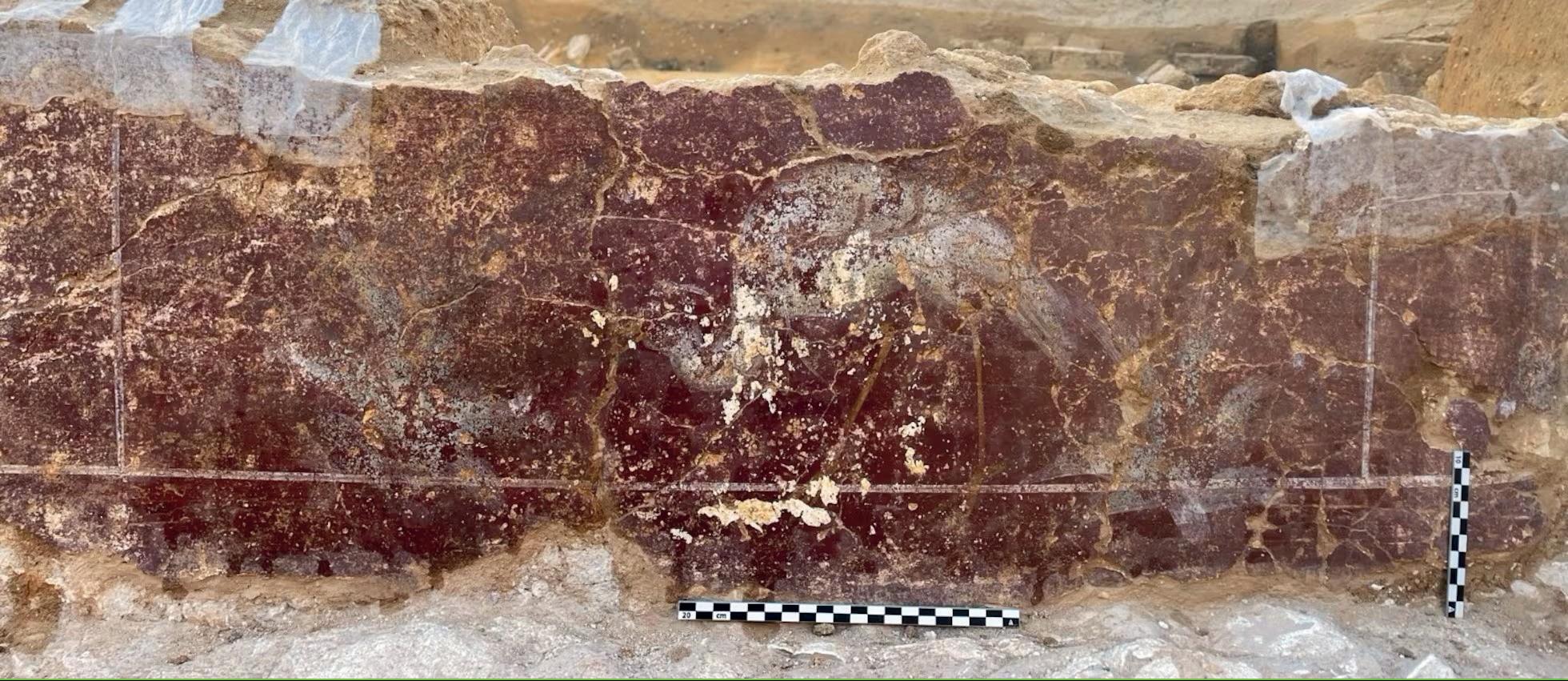

FASCINATING: A votive offering found at the site features a diagram of a foot

the northern part of Cadiz. It was early January 2022, and workers doing renovations accidentally uncovered Roman fragments - just the beginning of a much

he is - buried in a marble tomb, next to magistrates. That means he died a free man.”

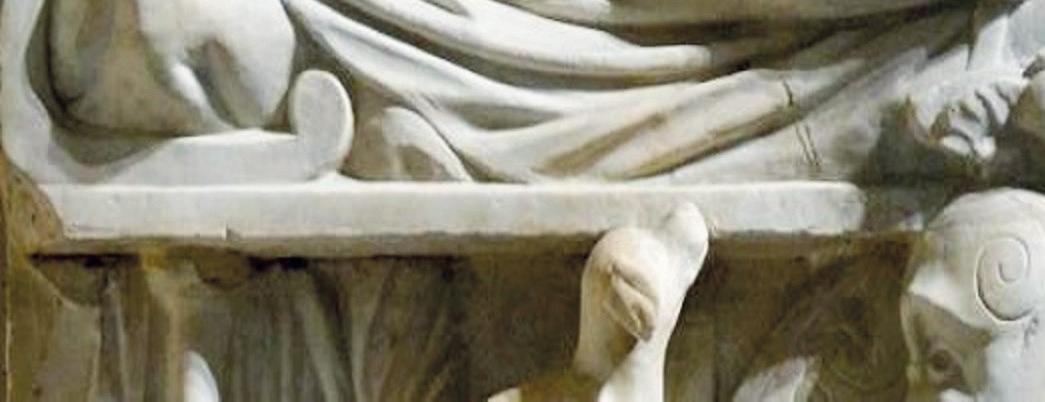
to afford a proper tomb. But the bitterness etched into his final words suggests that wealth and freedom didn’t buy him the peace he craved.
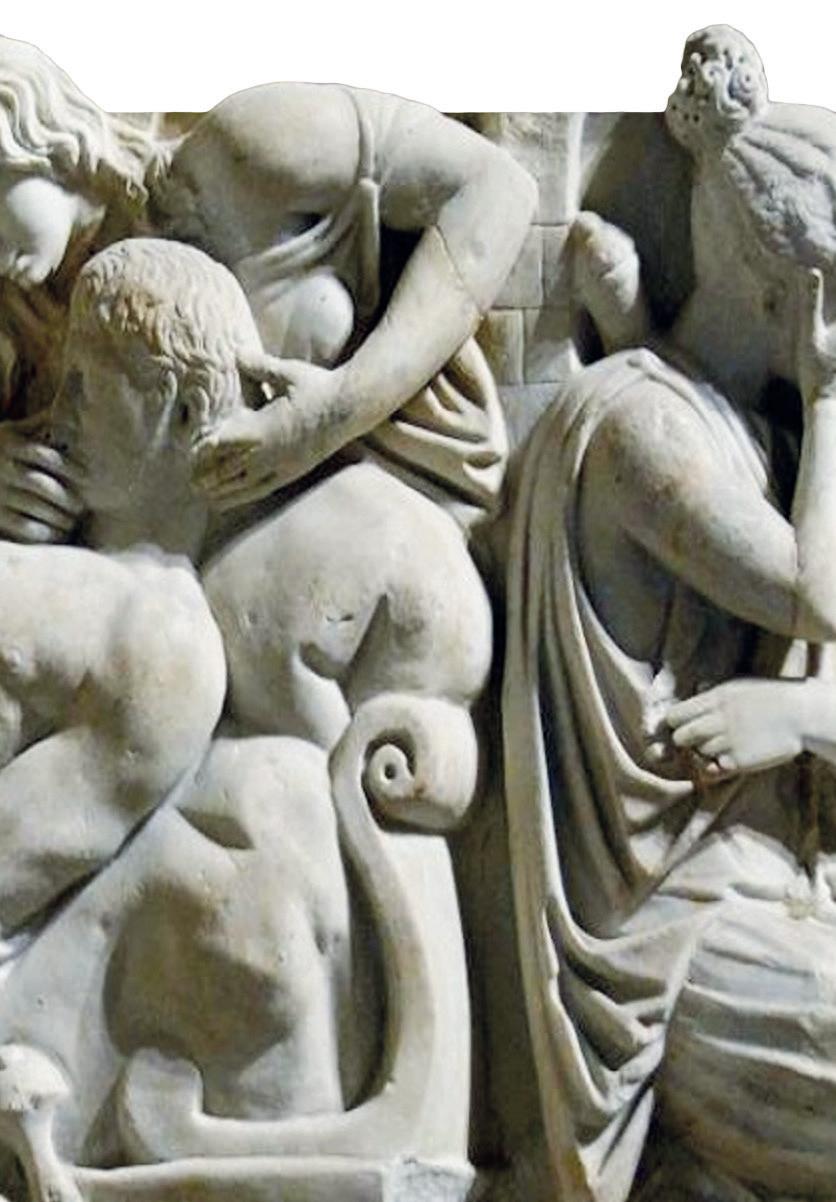

man, who really lived.”
One tomb belonged to a woman who lived to be a 100 larger story. Thanks to subsequent funding and the involvement of professional archaeologists, what was initial-
That much is clear from his burial. Roman tradition did not allow slaves to be interred in such proximity to the city’s elite. It’s likely Cinuras was manumitted - freed after years of loyal service - and succeeded well enough
And Cinuras is far from alone. The archaeologists have so far unearthed 269 inscriptions, many of them rich with personal histories.

“We are giving voice to a man who otherwise would have remained utterly unknown,” Santos reflects. “It’s very beautiful. The way his family and friends treated him is forgotten now. What remains is a real
One tomb belonged to a woman who lived to be 100 - an exceptional age in Roman times.
Others seem to cluster around what may have been a funerary college or even a temple, possibly dedicated to the Egyptian goddess Isis. -


November 29thDecember 12th 2023



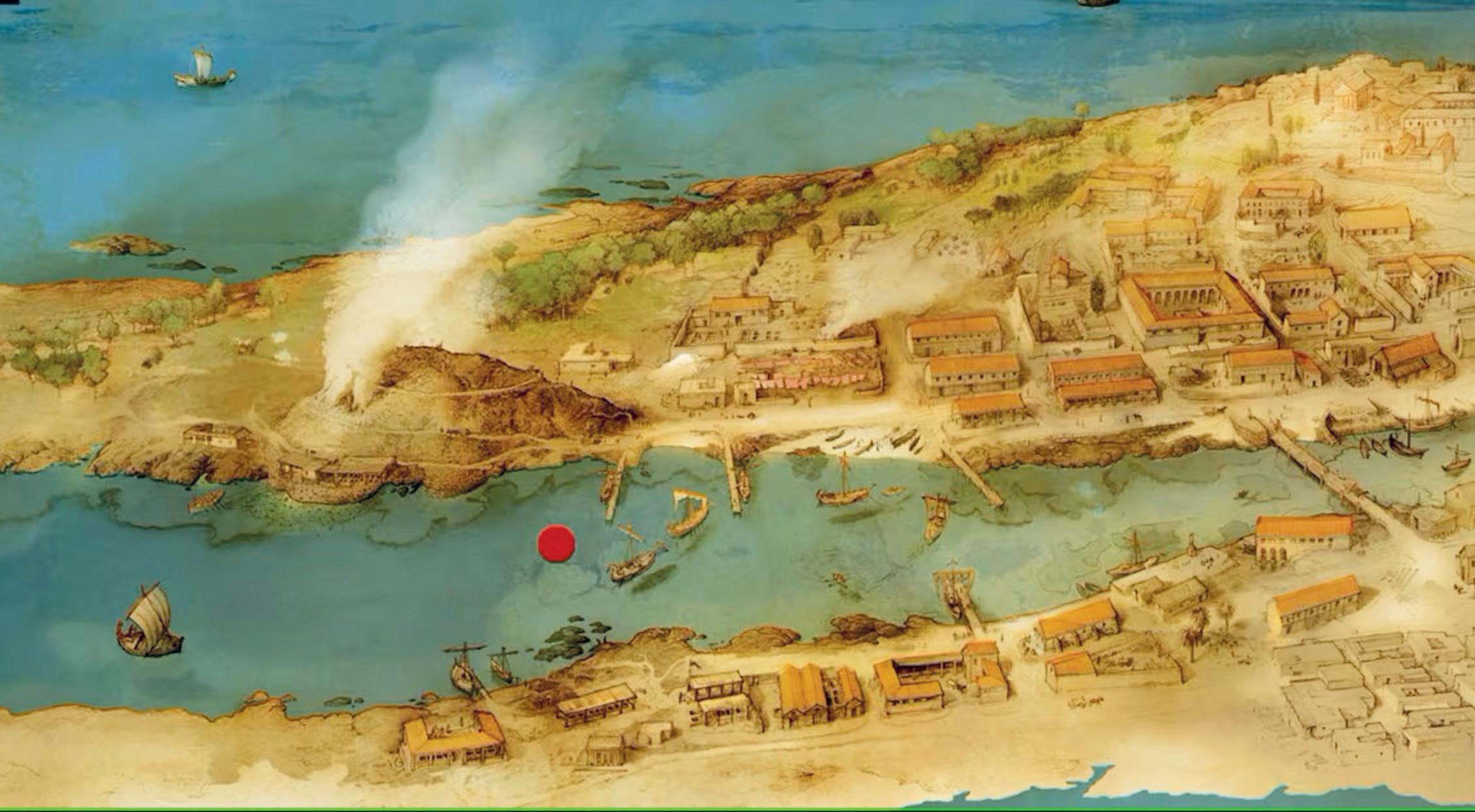


“We think this site was sacred to Isis,” explains Vazquez. “She was often worshipped in port cities like Gades. People probably came here regularly to pray and wanted to be buried near a place they loved.”
Small terracotta statuetteshand-held offerings likely left by worshippers - support this theory. So too do faint wall paintings showing birds and reeds, symbols linked to the Nile and Isis’s mythology.
“This wasn’t a luxurious temple,” Santos adds, “but a local, working chapel. It served real people, and they came back here in death.”
In total, the team has documented 55 burials so far, ranging from simple pits cut into dunes to ornate marble tombs dating from the 4th century AD, when the necropolis appears to have been abandoned.
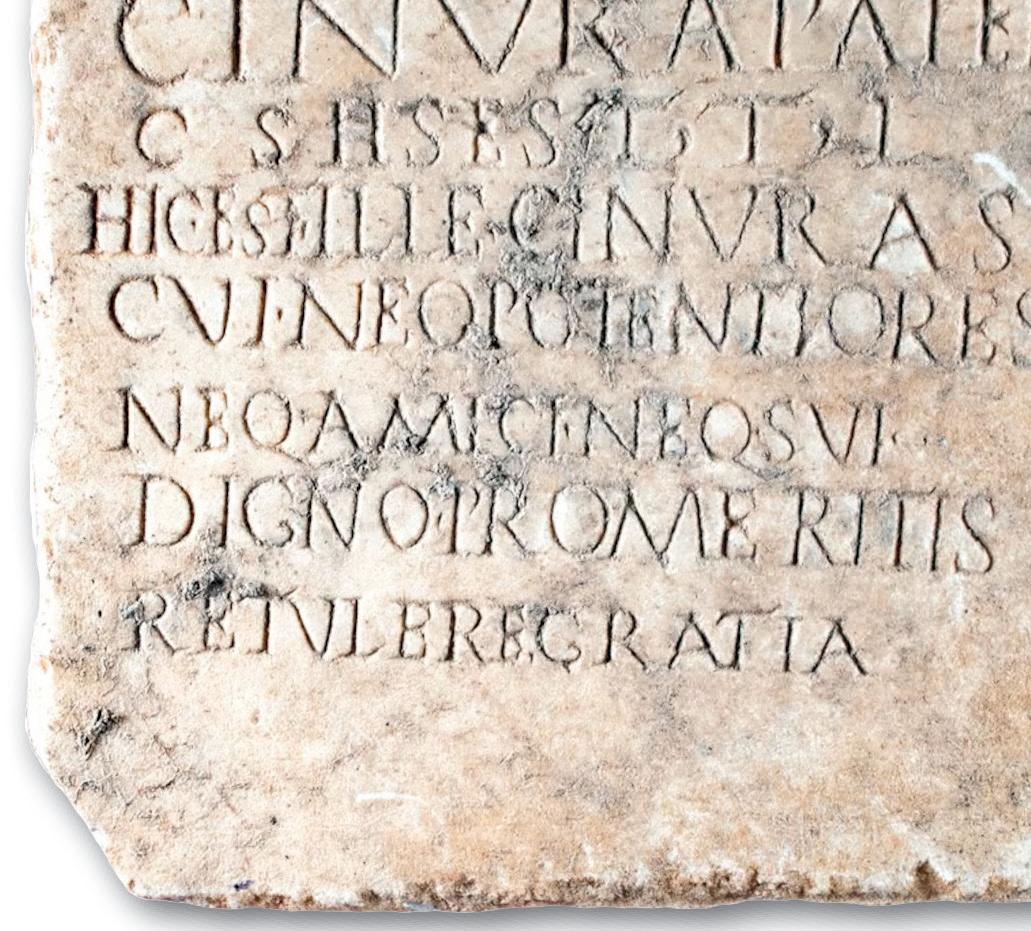
Remarkably, many of the tombstones were found stacked like playing cards, suggesting someone - long after Rome’s fall - had preserved them rather than destroy them.


“That kind of care is rare,” says Santos. “Normally, they’d be smashed or repurposed. But here, someone saw their value. Thanks to them, we now have this incredible archive of lives.”



The work is far from over. Vazquez and Santos believe the site could fundamentally reshape how we understand Cadiz’s place in the Roman world. Far from being a sleepy outpost, Gades may have been a centre of cultural exchange and spiritual significance.
“The investigation is just beginning,” Vazquez says. “And we’re probably going to make some overwhelming discoveries.”
But even now, before the full picture is known, the rediscovery of Cinuras feels like a quiet triumph.
A man who once lamented being forgotten is now, against all odds, remembered - his story a voice from the grave that still has something to say.
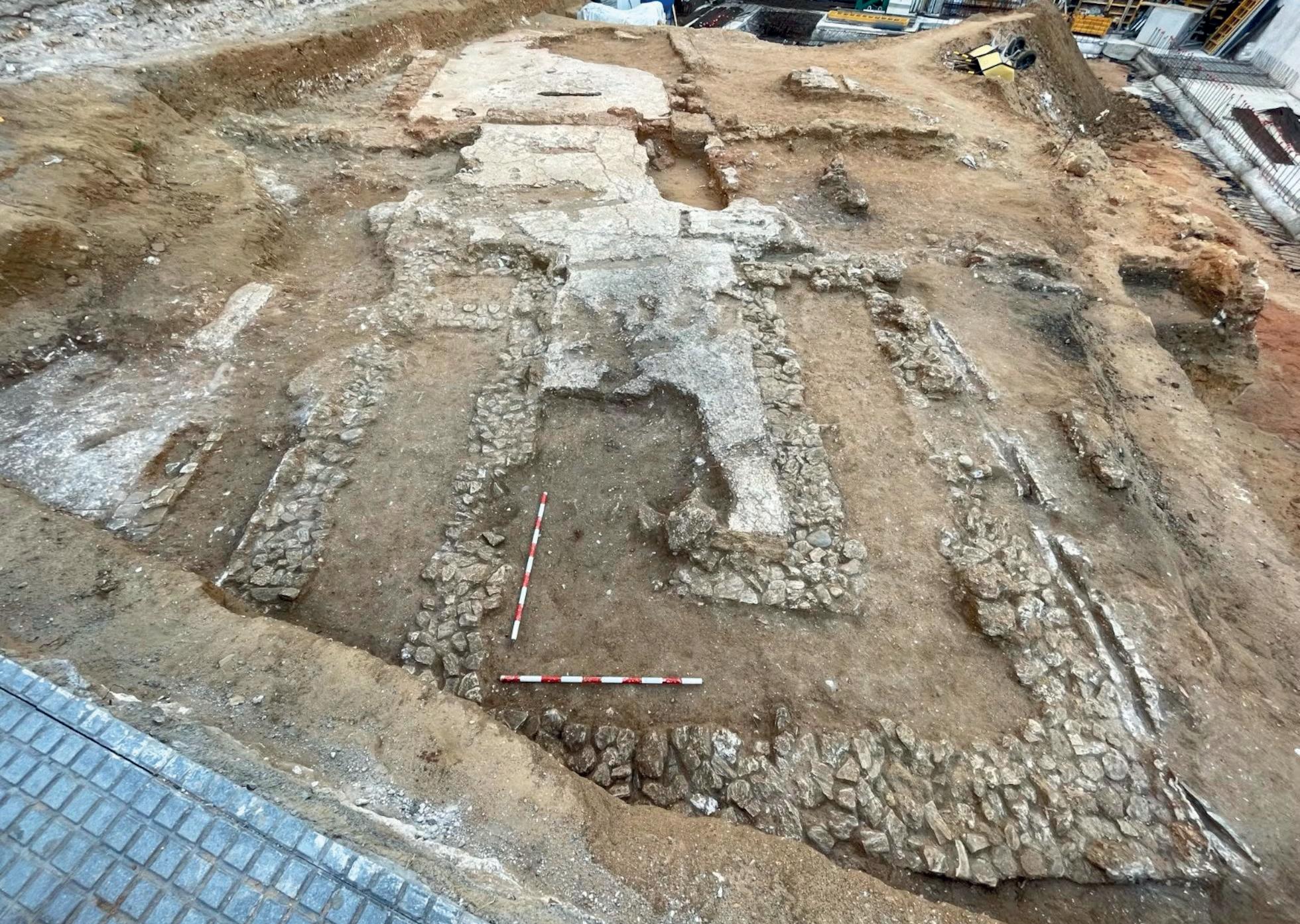











SPAIN’S government will allow the €11 billion BBVA hostile takeover of Sabadell Bank to go ahead, but under strict conditions that could see the bid being scrapped.
The biggest caveat is that the two banks cannot be merged for at least three years, with an option for an extra two years. No redundancies would be permitted at either entity during the period or changes to branches, i.e. closures.
The Economy Minister, Carlos Cuerpo, said the Council of Ministers approved the BBVA














PRIME Minister Pedro Sanchez claimed victory on Sunday after securing a last-minute deal with NATO, allowing Spain to remain in the alliance without meeting the controversial 5% of GDP defence spending target.





In an urgent address, Sanchez described the agreement as 'historic,' confirming Spain will

not have to increase defence spending to 5% nor meet that target by 2032. NATO leaders including Secretary-General Mark Rutte and US President Donald Trump had pushed the 5% goal amid rising tensions with Russia. Sanchez had threatened to veto the plan at this week’s NATO summit in The Hague, de-
manding an exemption from the steep rise from Spain’s current 1.3% defence budget. Under the deal, Spain will set its own spending trajectory, with plans reviewed in 2029. Sanchez pledged to spend 2.1% of GDP on defence to maintain necessary capabilities, balancing security with protecting Spain’s welfare state.
bid on the condition of ‘maintaining the legal personality, the separate assets and the autonomy in the management of both entities’.
“It is a decision that is proportionate, balanced and within the framework of Spanish regulations,” Cuerpo added.
The government announcement came after a public con-
Across: 7 Karate, 8 Atomic, 9 Stun, 10 Irritant, 11 Beaded, 13 Danube, 15 Reform, 17 Cosmos, 18 Egg white, 20 Lame, 21 Quayle, 22 My word.
Down: 1 Wait here, 2 Pawn, 3 Denied, 4 Paired, 5 Contends, 6 Lion, 12 Doorways, 14 Bloomers, 16 Mailed, 17 Creamy, 19 Go up, 20 Lewd.
By Alex Trelinski
sultation period launched in May. Its terms mean that BBVA has a major decision to make over accepting the government demands; or to make a Supreme Court challenge; or to simply walk away from its

The BBVA chairman, Carlos Torres, previously said it would be ‘illegal’ for the government to impose extra conditions.
He also said that if profitability was affected, the offer would be withdrawn.
BBVA takeover approved – but with strings attached
BBVA had been preparing to launch its formal tender offer to Sabadell shareholders in the coming weeks.
Sabadell, meanwhile, has been looking to pay shareholders more to fend off the takeover by the potential sale of the TSB Bank in the UK.


MANY people are familiar with the New York Stock Exchange (founded in 1792) or the London Stock Exchange (1801). But fewer know that Madrid launched its own in 1831. Since then, three more stock exchanges have opened across Spain – in Bilbao (1890), Barcelona (1915) and Valencia (1980).
All four still operate today, though modern technology has dramatically changed how they work and look.If you own a hammer and replace its handle – then its head – is it still the same tool? Spain’s stock exchanges raise a similar question. So much has changed, what do they still have in common with their origins?
Think of them as giant, buzzing street markets. Companies set up stalls and shoppers (investors) wander through, buying and selling parts of the stall –not fruit or flowers, but shares. Like any market, they’re prone to rumour. A whiff of bad news (economic decline)? Cue panic selling. Gossip about a tech breakthrough? Prices surge. Alongside shares, there’s the bond market – where shoppers lend money to stallholders (companies) to help them grow.
Modern exchanges bundle these street-style markets together –
Spain’s historic stock exchanges still power the economy – but few know how they work or why they matter
stocks, bonds, and other assets like ETFs – under one roof.
For much of their history, Spain’s four regional exchanges operated independently, often listing the same companies. But in 2002, they were electronically merged into a single system with shared trading rules, order books and infrastructure. Each exchange still maintains its own governing board – a nod to regional pride. Madrid and Barcelona make obvious sense – they’re Spain’s two biggest cities. But why did Bilbao and Valencia get stock exchanges, while Malaga, Sevilla and Zaragoza did not?
BILBAO
By the late 1800s, Bilbao had become Spain’s industrial capital. Steel, shipbuilding and mining fuelled a booming economy, supported by Basque bankers and investors with strong international links. Banks like Banco de Bilbao and Banco de Vizcaya (which later merged into BBVA)
Peter Dougherty
• MBA in finance
• MS in Spanish taxation
• BS in economics

• European Financial Planner in Spain
• Chartered Retirement Planning Counselor® in U.S.
• Author of two financial planning books
backed major industrial projects, creating a clear need for a local capital market.
HIGH taxes and bureaucracy are reasons touted as to why Spain has dropped out of the top 10 in a foreign investment survey highlighting short-term deals of up to three years. Spain is now ranked 11th out of 25 large world economies according to the latest Confidence Index for Foreign Direct Investment (FDI) compiled by global management consulting firm Kearney.

The country has fallen three places in the last two years, having been in the top 10 since 2021 and has recorded an annual 13% fall in the index rating. Gregorio Izquierdo, general-director of the CEOE, which represents private and state businesses in Spain, believes the 13% drop is down to ‘legal uncertainty’.
“There is a delay and lack of effectiveness of legal processes including excessive tax litigation in our country and an insufficient defence of the right to private property,” he claimed. Though squatting is on the rise, it is still relatively minor, but Izquierdo said it ‘greatly damages the image of Spain over protecting property rights and it is something that we should avoid’.
Other factors put forward are regulatory complexity and excess bureaucracy with a 'tangle of regulations, obligations and licenses that do nothing but hinder business activity'.

Valencia has long been a commercial hub thanks to its Mediterranean port, agricultural wealth and industrial strength in sectors like furniture, textiles and ceramics. Its strong business base made it a natural candidate for a stock exchange to support local investment.
MALAGA AND SEVILLA
Despite being large and culturally rich, these southern cities lacked the industrial and fi nancial muscle of Bilbao or Valencia. They focused more on agriculture, shipping and tourism than on raising capital for heavy industry.
ZARAGOZA
Spain’s fourth most populous city, Zaragoza has an economy built on logistics, agriculture and manufacturing. But it never developed the banking and finance infrastructure needed for a capital market. By the time it might have done so, Spain’s financial needs were already covered by the other exchanges. Although Spain’s stock exchanges quietly power the economy like a beating heart, they are often overlooked. Nevertheless, they’re where companies raise money and in-
vestors chase dreams. This gap between the scant attention they’re paid and their importance may be due to the lack of direct interaction most of us have with them. Or it might be because we secretly prefer that stocks and bonds still be bought and sold in a vibrant street market where we might encounter more food and fewer business suits than stock exchanges offer.
















KYLIAN Mbappe was hospitalised in Miami with acute gastroenteritis during the FIFA Club World Cup. Real Madrid confirmed he missed their opening match against Al Hilal due to a fever and was discharged the same day to continue recovery.
Coach Xabi Alonso said Mbappe would likely be fit for the knockout rounds. Real take on Juventus tonight (Wednesday) , but it is unknown if Mbappe will play.








Mbappe also missed the next game versus Pachuca but returned to light training ahead of the final group match against RB Salzburg, which he also missed.


Big regional variations in public health service standards
THE Valencian Community and Andalucia have the worst public health services in Spain, followed by the Balearic Islands, according to an annual study. The conclusions have been reached by the Federation of Associations for the Defence of Public Health (FADSP). They’ve graded public health provision in Spain’s regions based on the latest available figures.
The FADSP admits there are issues due to a ‘lack of transparency and diligence of health authorities which means some statistics are not
By Alex Trelinski
sufficiently updated’. Elements analysed include funding and resources – including per head expenditure and the number of beds available per 1,000 people. Other factors are numbers of operating theatres and doctors, in addition to waiting lists, pharmaceutical spending, and patient surveys. The study then pools everything together to create a score system where the maximum value is 142 points and the lowest is 33.
The French star reportedly lost up to five kilograms during his illness, causing concern among fans. Gastroenteritis is a common intestinal infection causing diarrhoea, vomiting and dehydration, which can require hospital treatment.
Good hygiene and hydration are key to prevention and recovery.
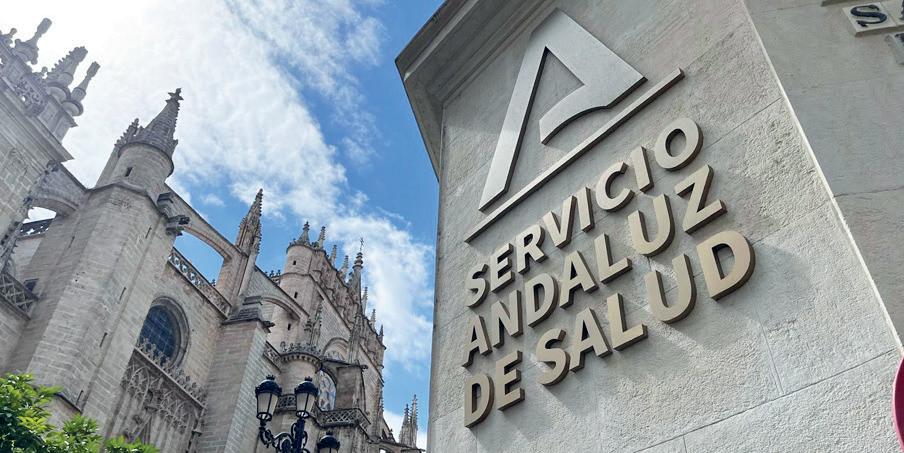
The average score obtained by the regions is 85.41.
FADSP spokesperson Dr Marciano Provencio said:
“There is a great disparity in health services between regions, which far from decreasing has increased.”
“This continues to jeopardise the necessary cohesion and equity between areas,” he added.
The worst figure of 62 was achieved by the Valencian Community, followed by 66 for Andalucia, and then 77 by the Balearic Islands.
The best scores were recorded in Navarre (106), the Basque Country (105), Asturias (100)


and Castilla y Leon (95).
Above average grades were achieved by Aragon (91), Cantabria (91), La Rioja (91), Extremadura (90) and Galicia (82).
Below average were Catalunya (80), the Canary Islands (79), Castilla–La Mancha (79), Madrid (79) and Murcia (78).
The survey also looks at the take-up of private insurance, with 38.7% of the Madrid region population having policies, followed by Catalunya (32.4%) and the Balearics (30.9%).
In sharp contrast, only 11.2% of people in Navarre have private policies.
with our 2 for 1 glasses from 69€








CARLOS Alcaraz paused his Wimbledon match to aid a fainting fan in 32C heat, offering water before sealing a five-set win over Fabio Fognini in a four-hour epic.
A UK TikTok star has slammed Marbella as a haven reserved for ‘fraudsters, drug dealers and footballers’, warning average people can’t afford €20 Red Bulls, €50 entry fees and €1,500 table minimums.
FOOTBALL boss Luis Rubiales has avoided jail after the National Court upheld his €10,800 fine for the controversial non-consensual kiss of footballer Jenni Hermoso after 2023’s Women’s World Cup final.
FORMER Spurs winger David Bentley made waves in Puerto Banus this week – quite literally – after being spotted partying on a jet ski while getting served… from a yacht. The retired England star, 40, was seen zooming around outside the Marbella marina with a grin as wide as his crossing range, pulling doughnuts and spraying tourists.
In a moment worthy of a beer ad, Ian Radford - boss of local celeb haunt La Sala - lobbed a can of cold beer from a swanky yacht to the jet-skiing footballer – who impressively
caught it one-handed. “He’s still got the touch!” one onlooker shouted, as Bentley cracked it open midride and toasted the crowd like



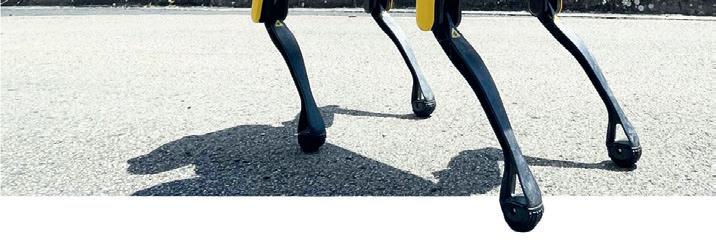
By Dilip Kuner
a sunburnt James Bond. Now a Marbella regular and co-owner of La Sala, Bentley looked like he was enjoying retirement as much as his Premier League days – minus the defending.
Locals say he’s become a fixture in Banus, but few expected the former England winger to be playing keepy-uppy with a San Miguel while straddling
JUICED UP: But the guava had hidden cocaine
a jet engine. As one beachgoer put it: “Only in Marbella.”
Eyewitnesses claimed the waterfront crowd gave a cheeky round of applause, while one British holidaymaker asked if Bentley was audi-

GRINNING: Bentley gives a wave while Radord steers, before the ex-Spurs star took over
tioning for the next Fast & Furious film
The stunt reportedly sparked a wave of copycat jet ski antics – none of which ended with such style.

SPANISH boffins will have a new best friend as they decommission a nuclear power station - a robotic dog called Spot. The high-tech pooch, built by Boston Dynamics and tweaked by tech firms GDES and Alisys, is on a mission to sniff out any sneaky leftover radiation hiding in walls and floors.
The plant’s been out of action since 2012, and now Spot’s joining the decade-long tidy-up, sending live data back to boffins so humans don’t have to poke around in the radioactive muck themselves.
The project involves the development, testing, and commissioning of the robotic system, along with training for Enresa personnel who will eventually operate it.




IT sounded like the ultimate wellness hack for the high-flying elite - a smoothie that could fuel a finance bro’s 3am club cameo AND his 6am gym session. But Spanish authorities have juiced the dream, uncovering a cocaine lab in Valencia where criminals were extracting cocaine base hidden inside
drums of frozen guava pulp - perhaps the ultimate fruit smoothie for a certain type of health conscious junkie. In a sting operation codenamed ‘I. Amable/Sunka/Zafra’ (which frankly sounds like a niche juice bar), police and customs agents dismantled a narco network ca-
pable of ‘cooking’ up 30 kilos of cocaine a day. Some 25 arrests have been made.
Police suspicions were raised when shipments of industrial drums of tropical fruit, imported through a legit-looking food company, were paid for by a man who had oodles of cash despite apparently living off unemployment benefits.

